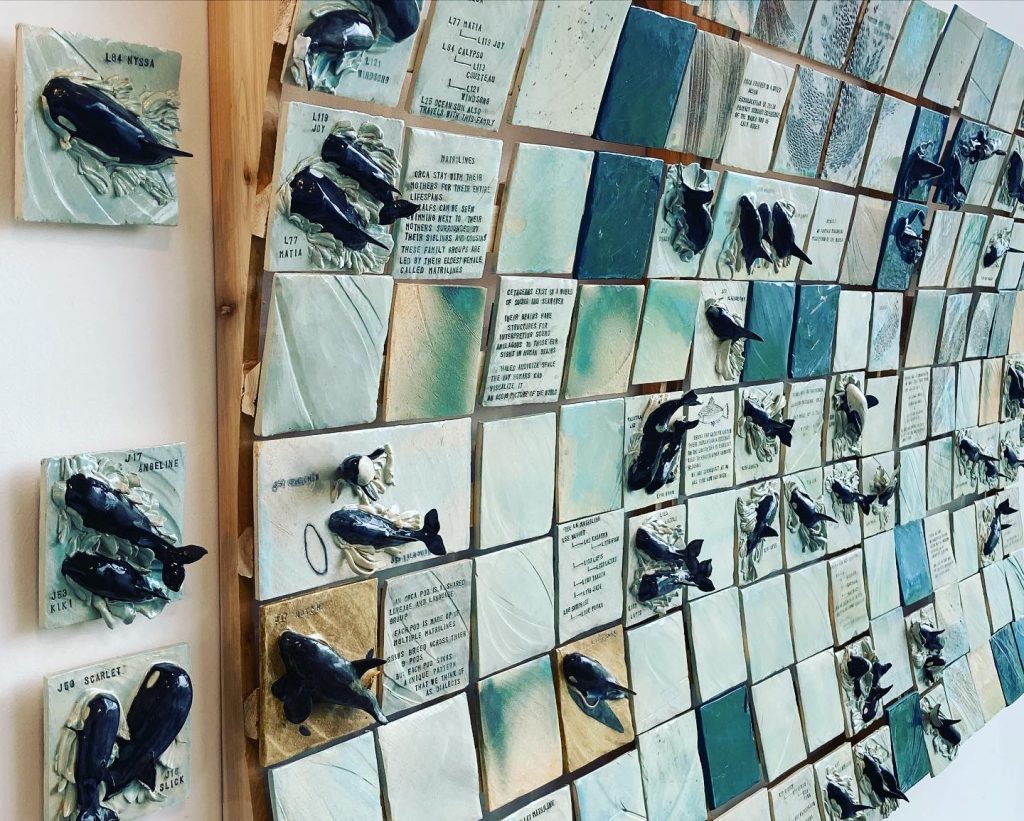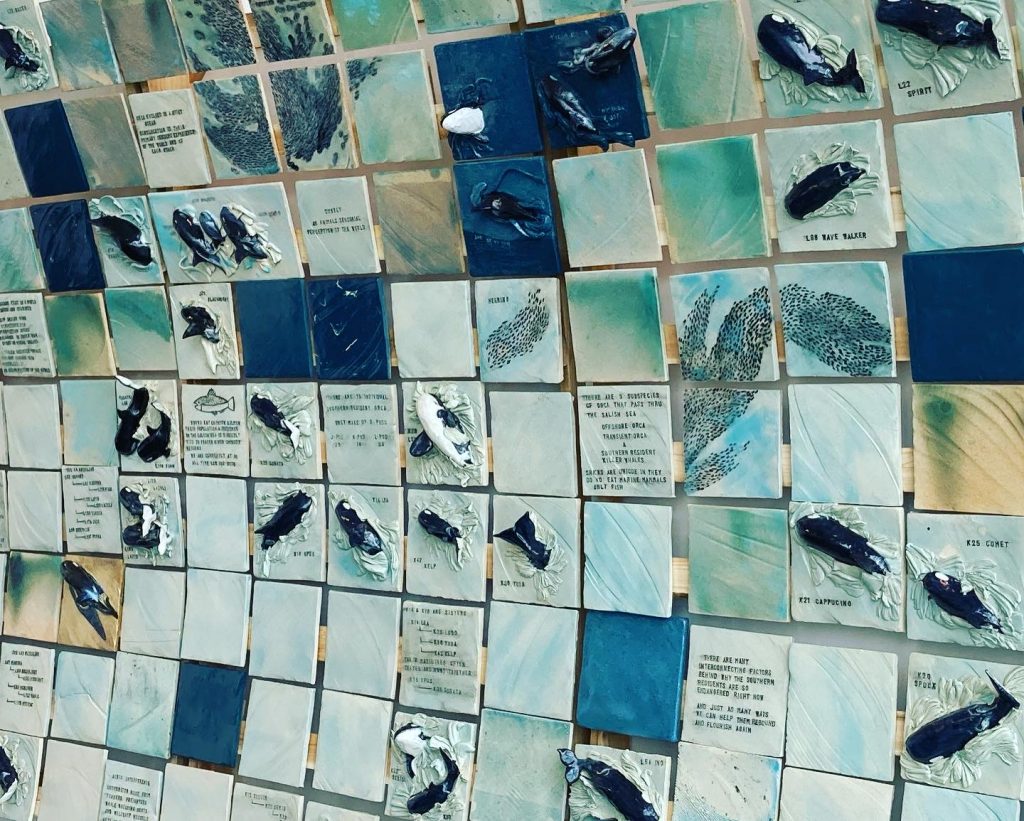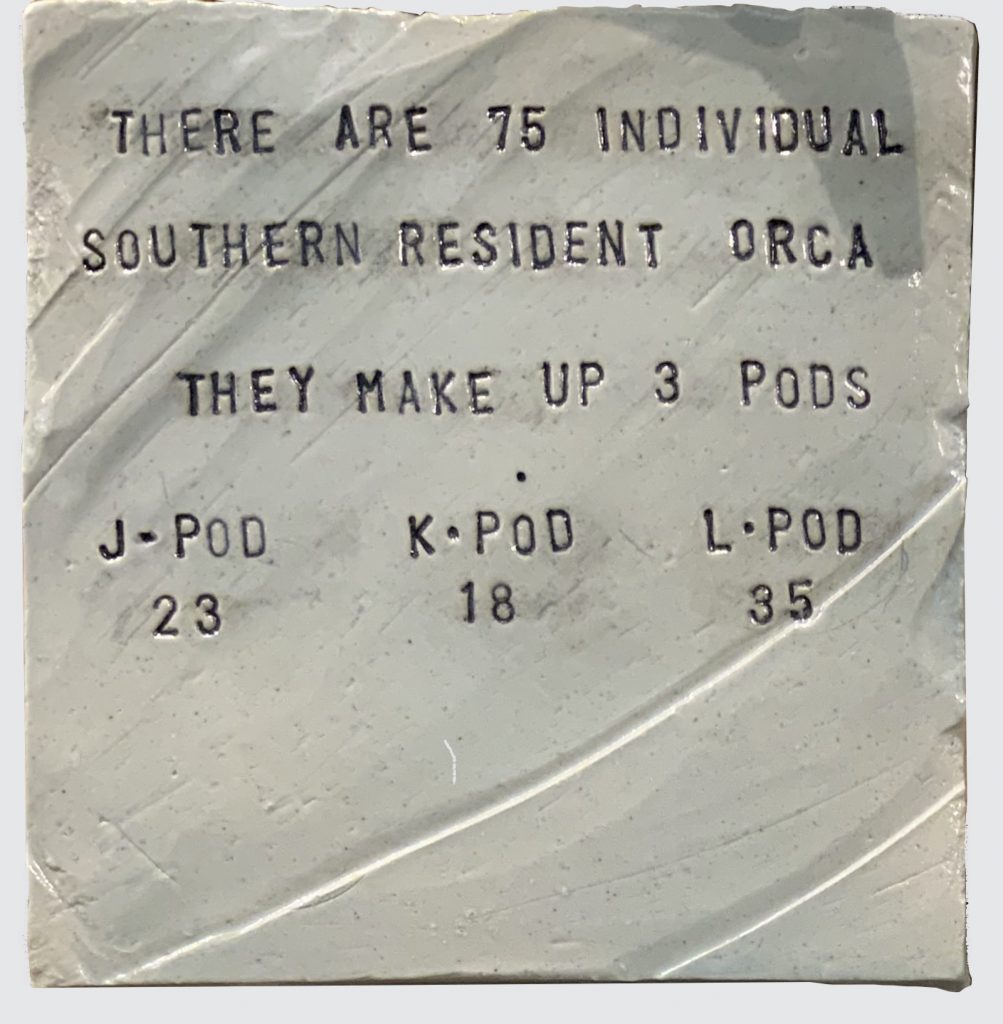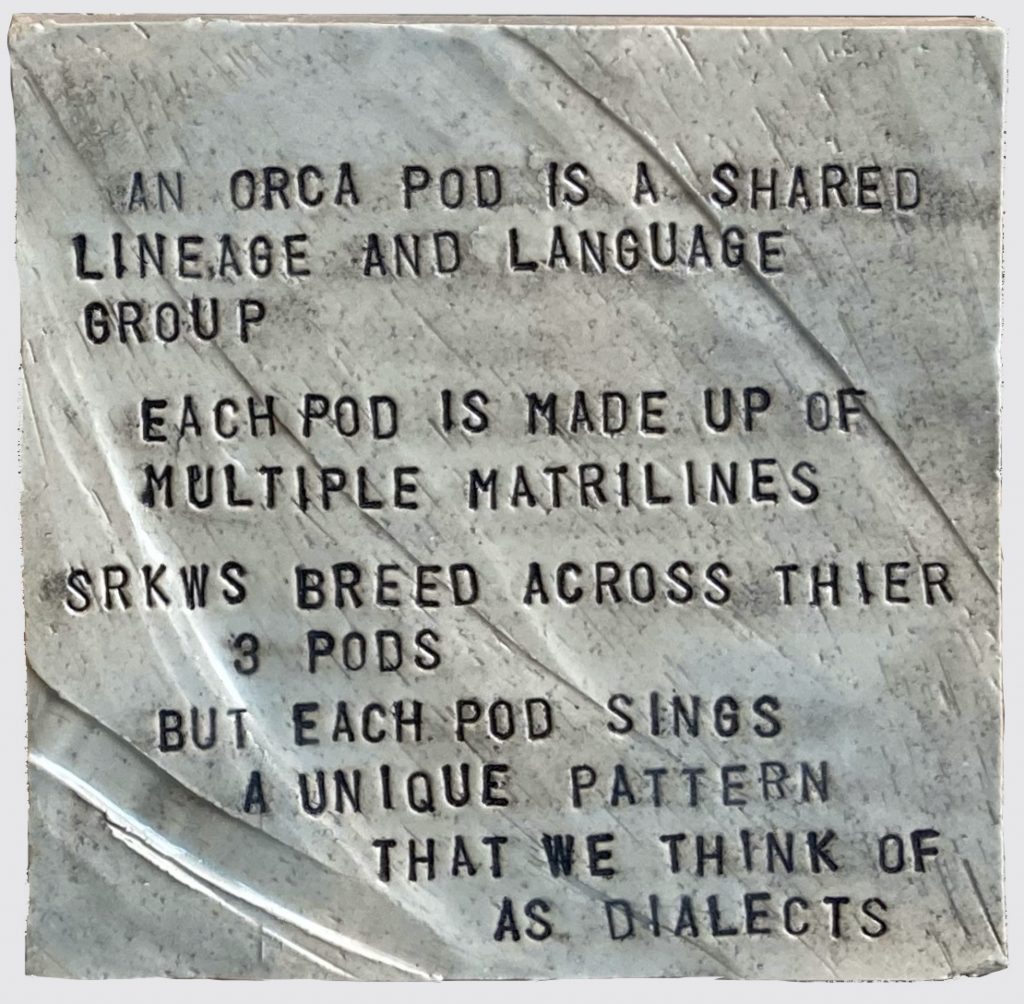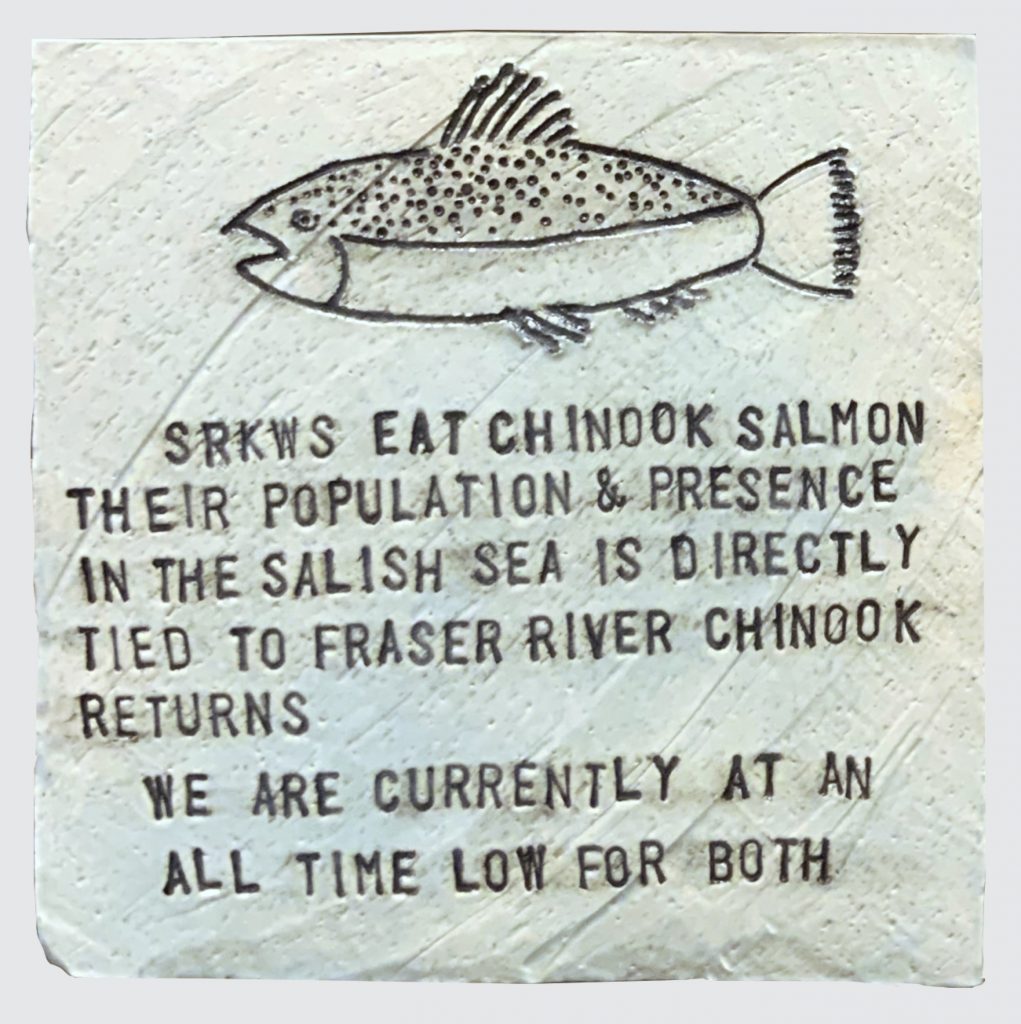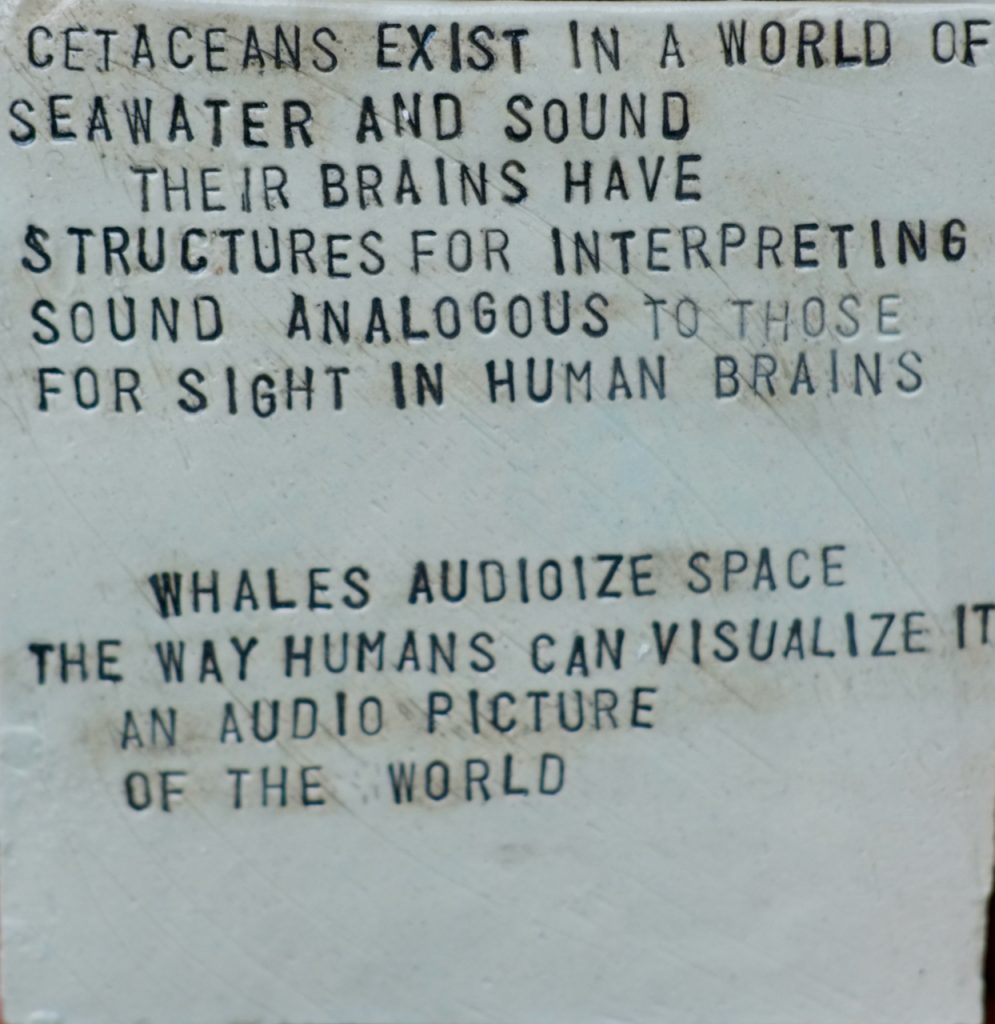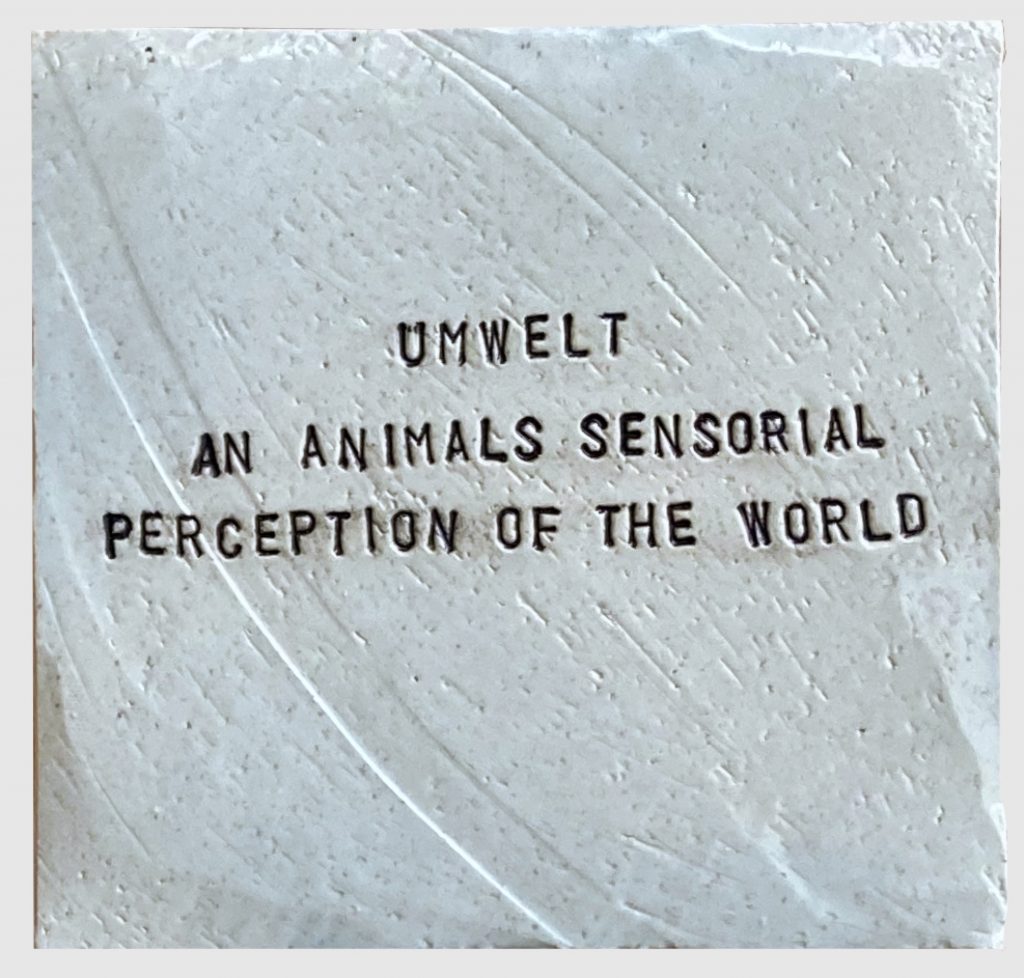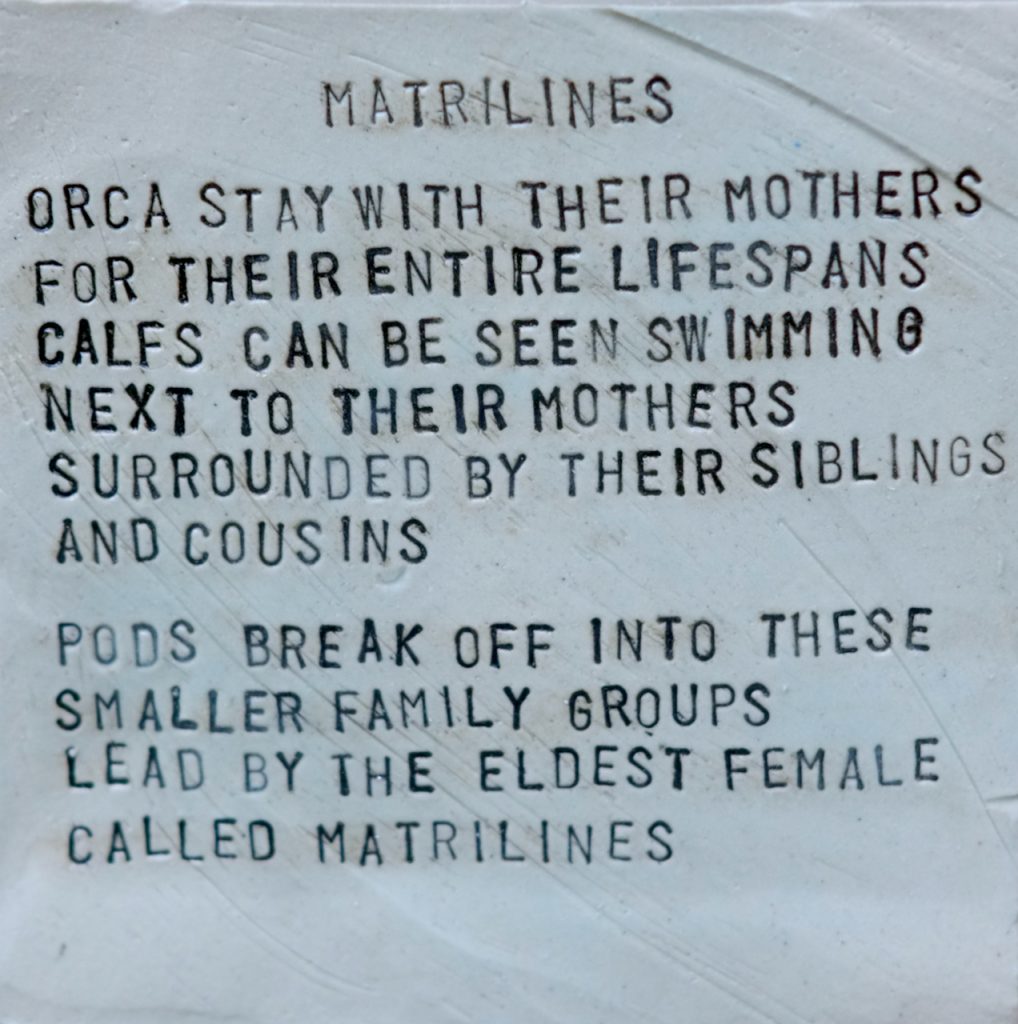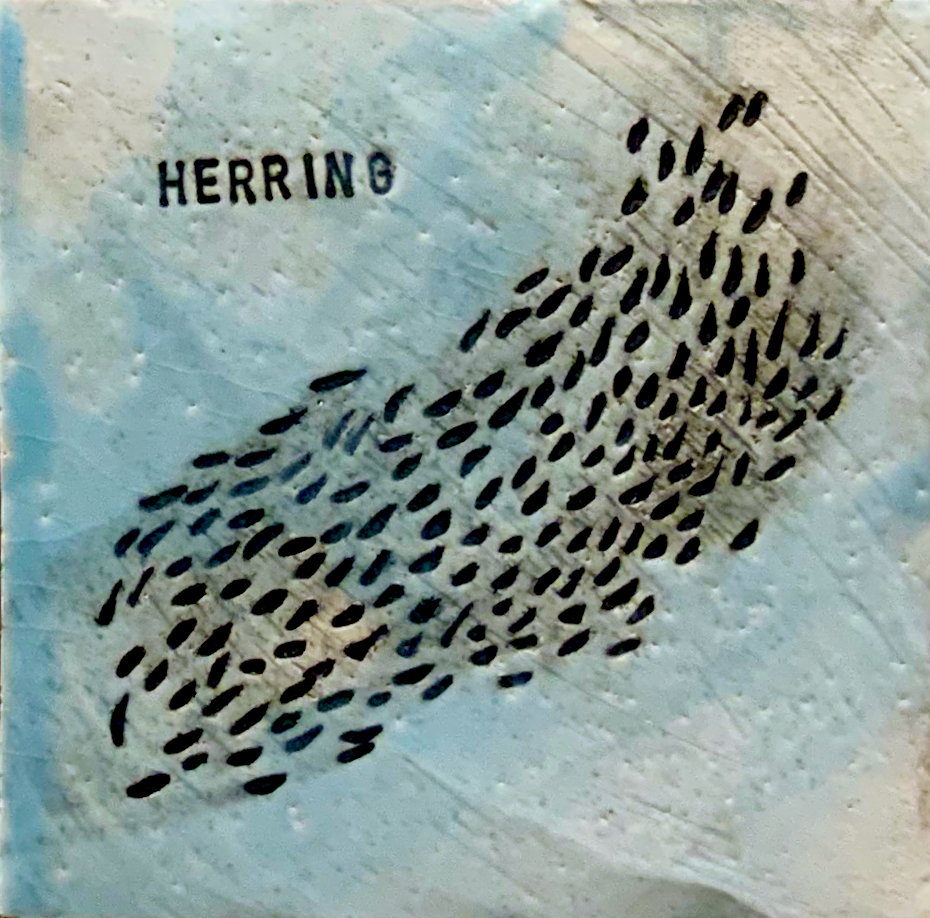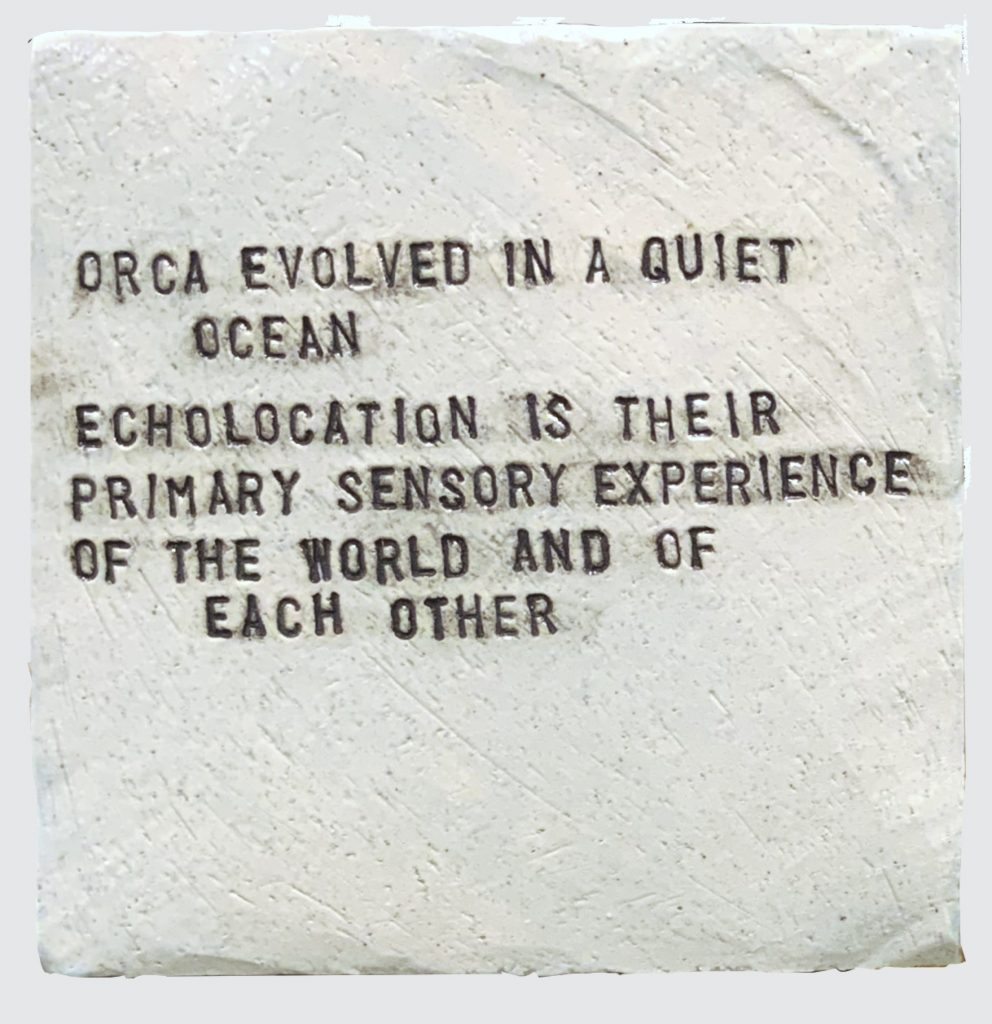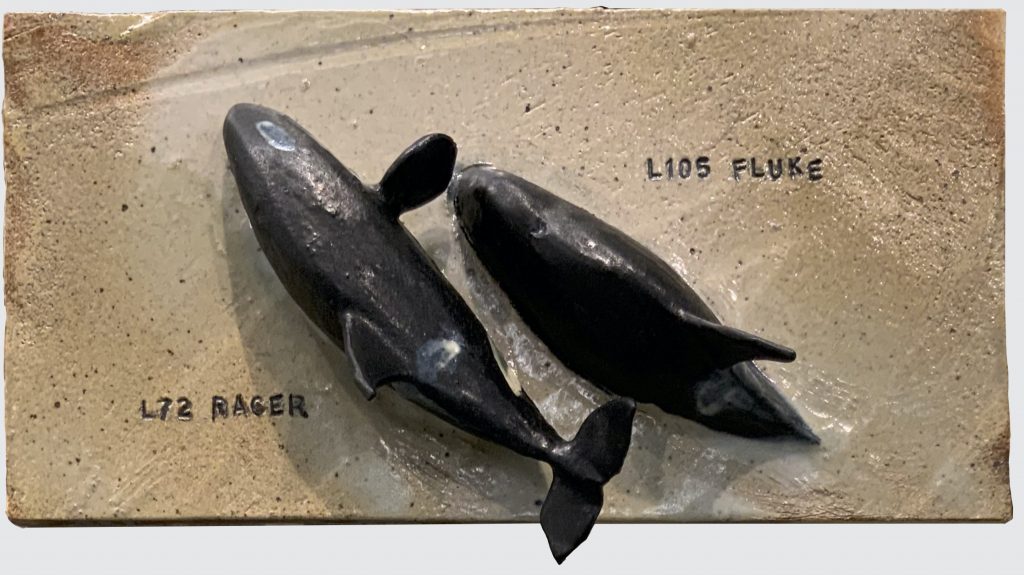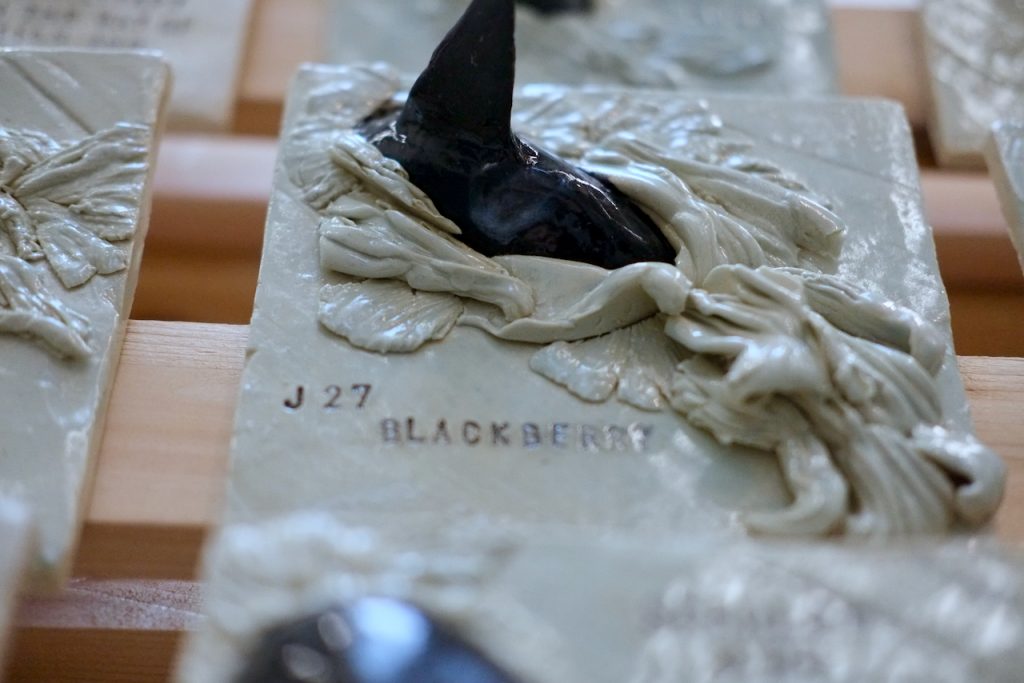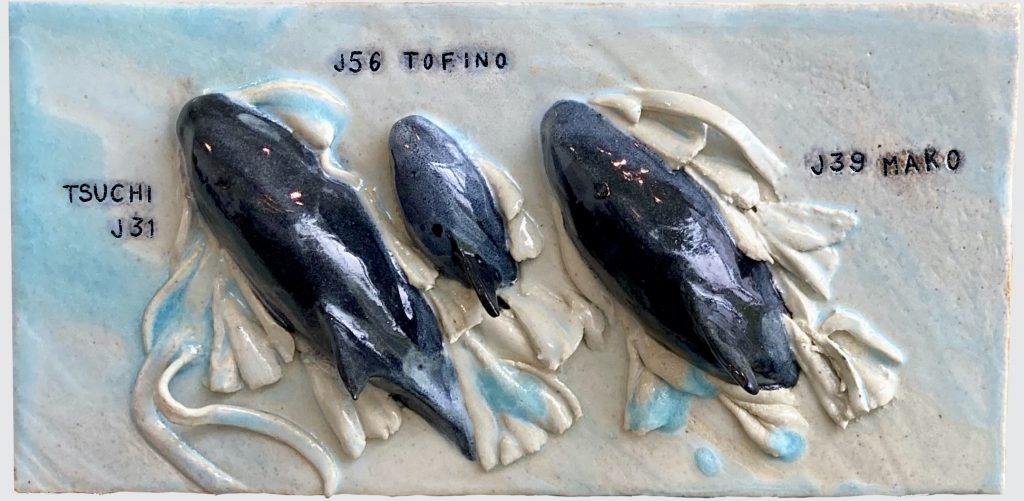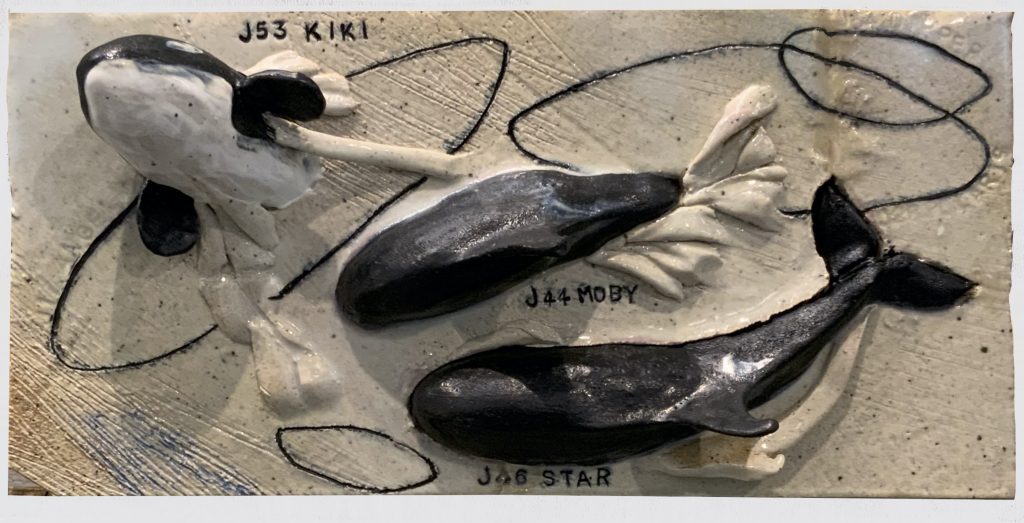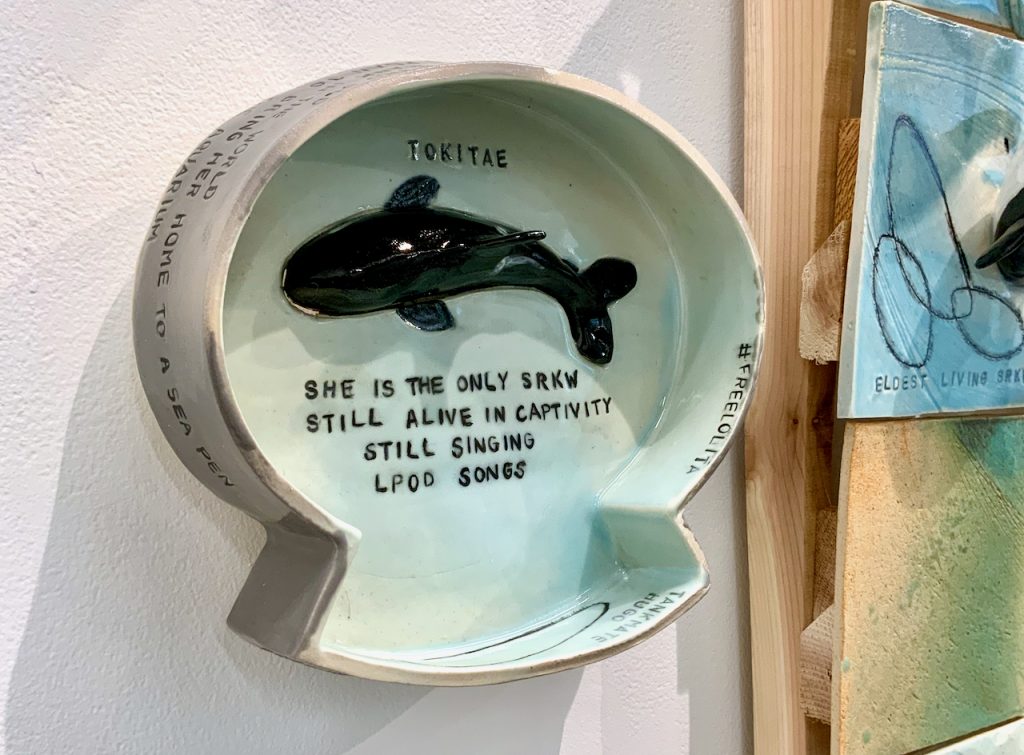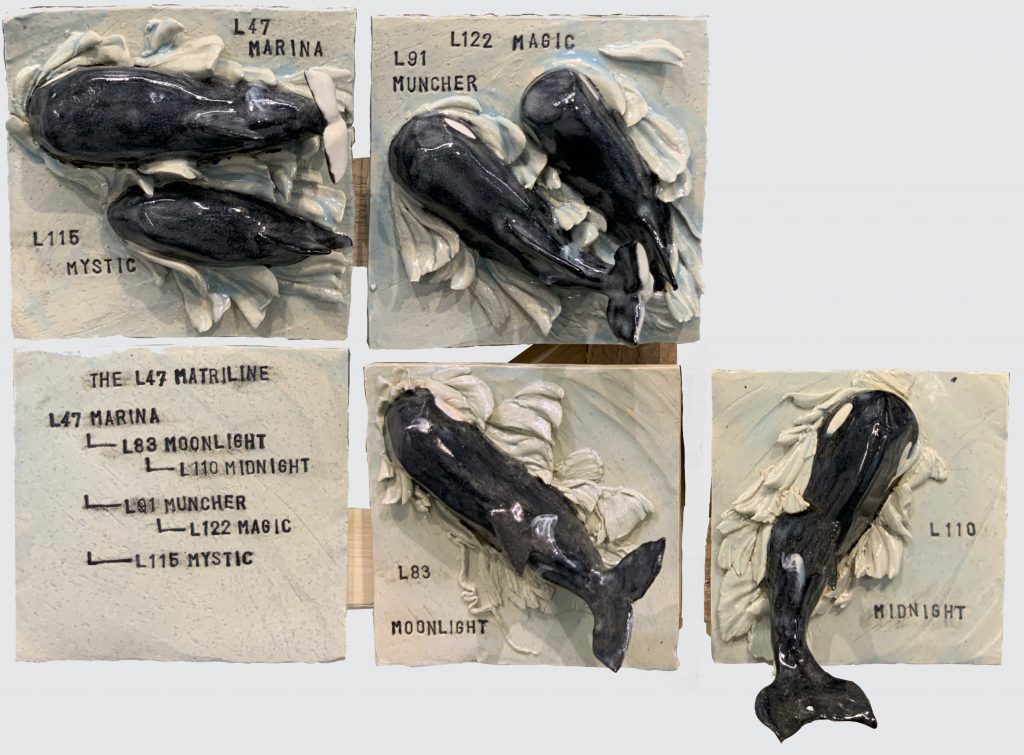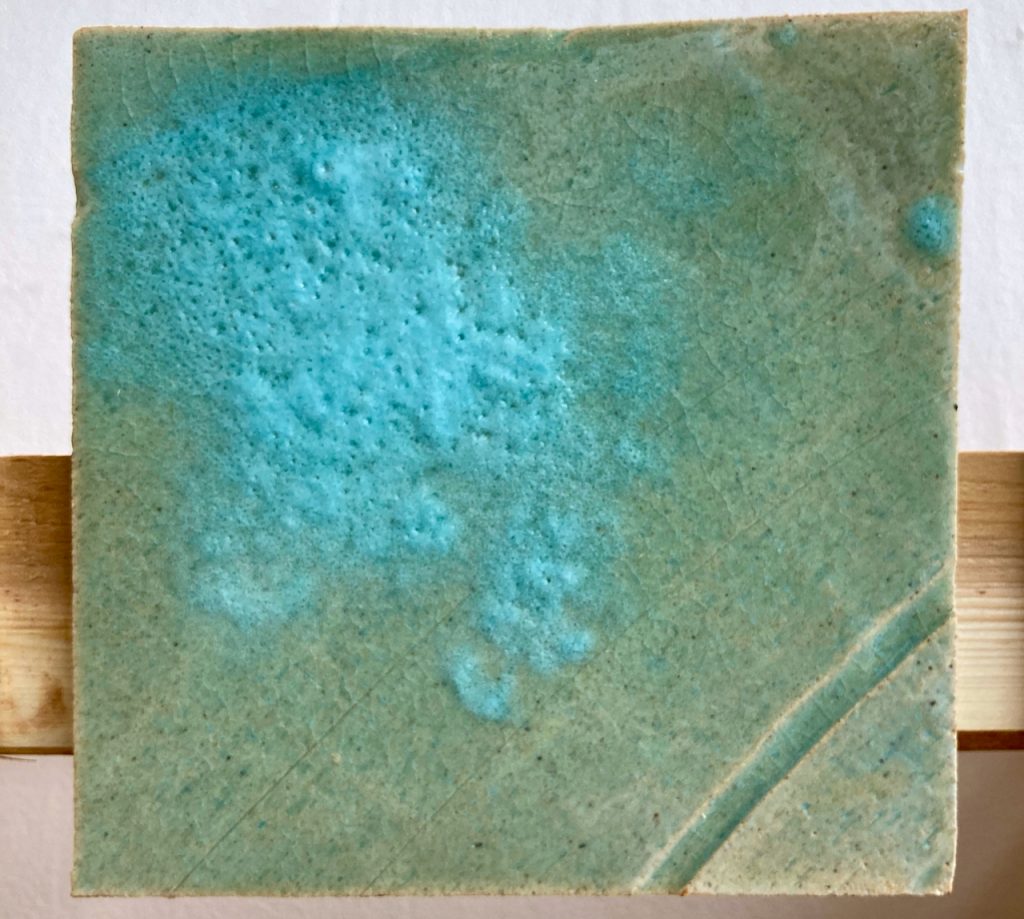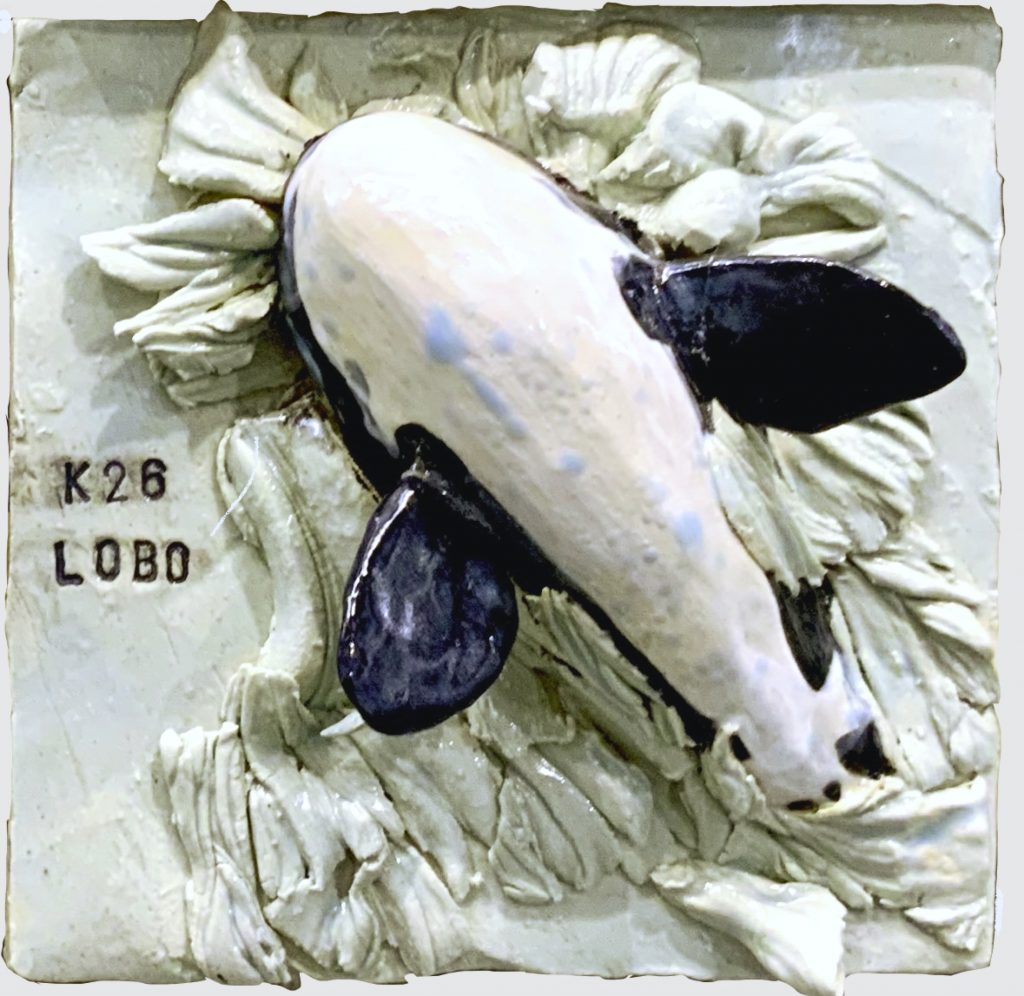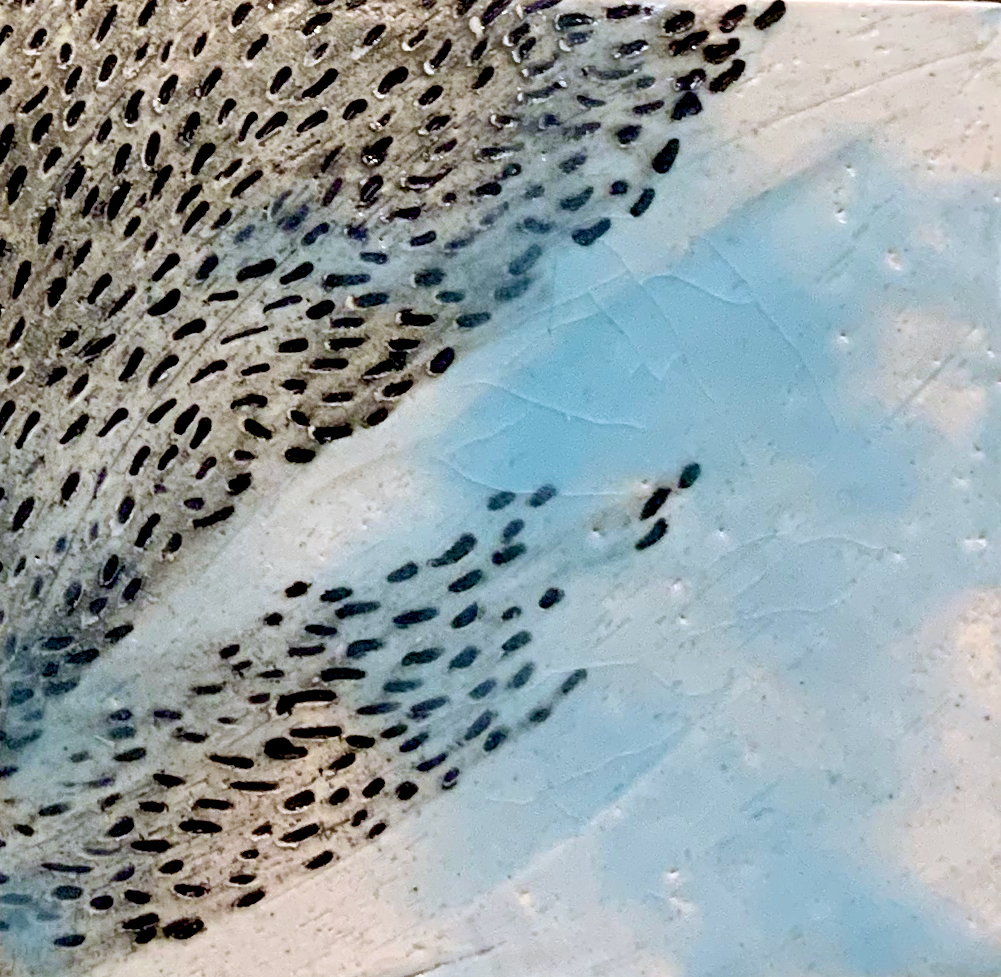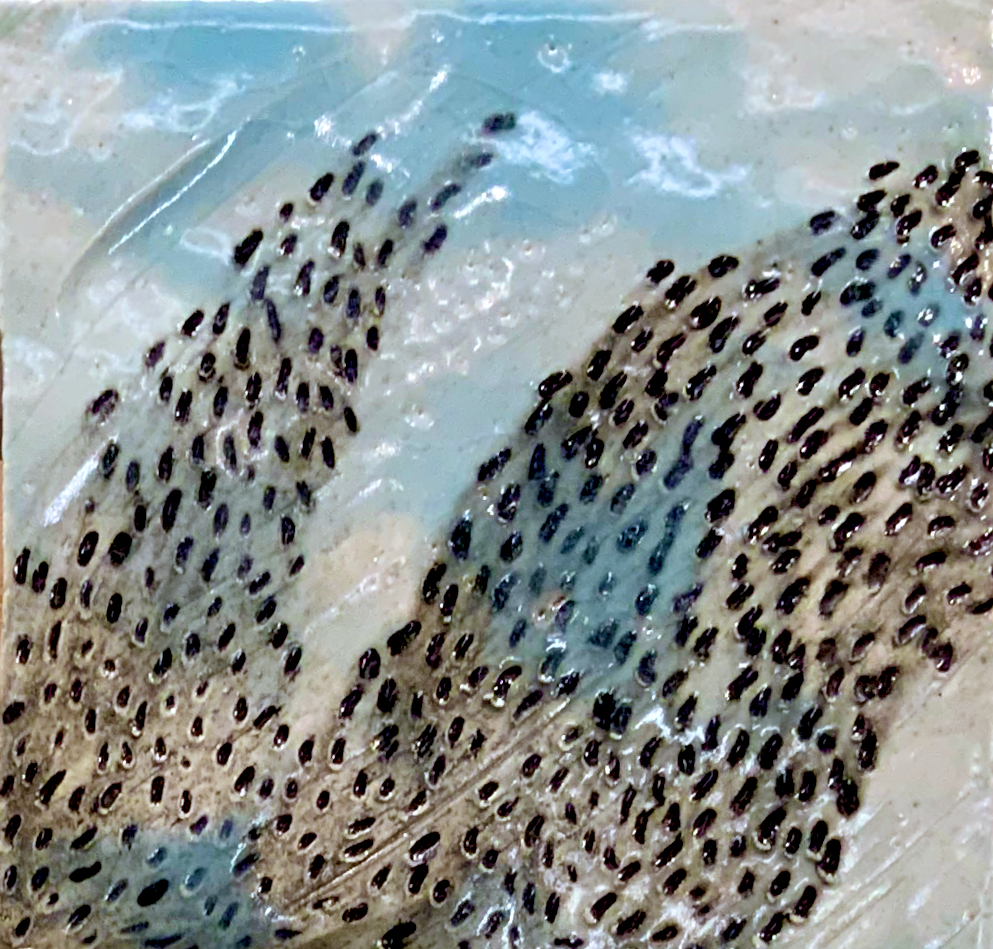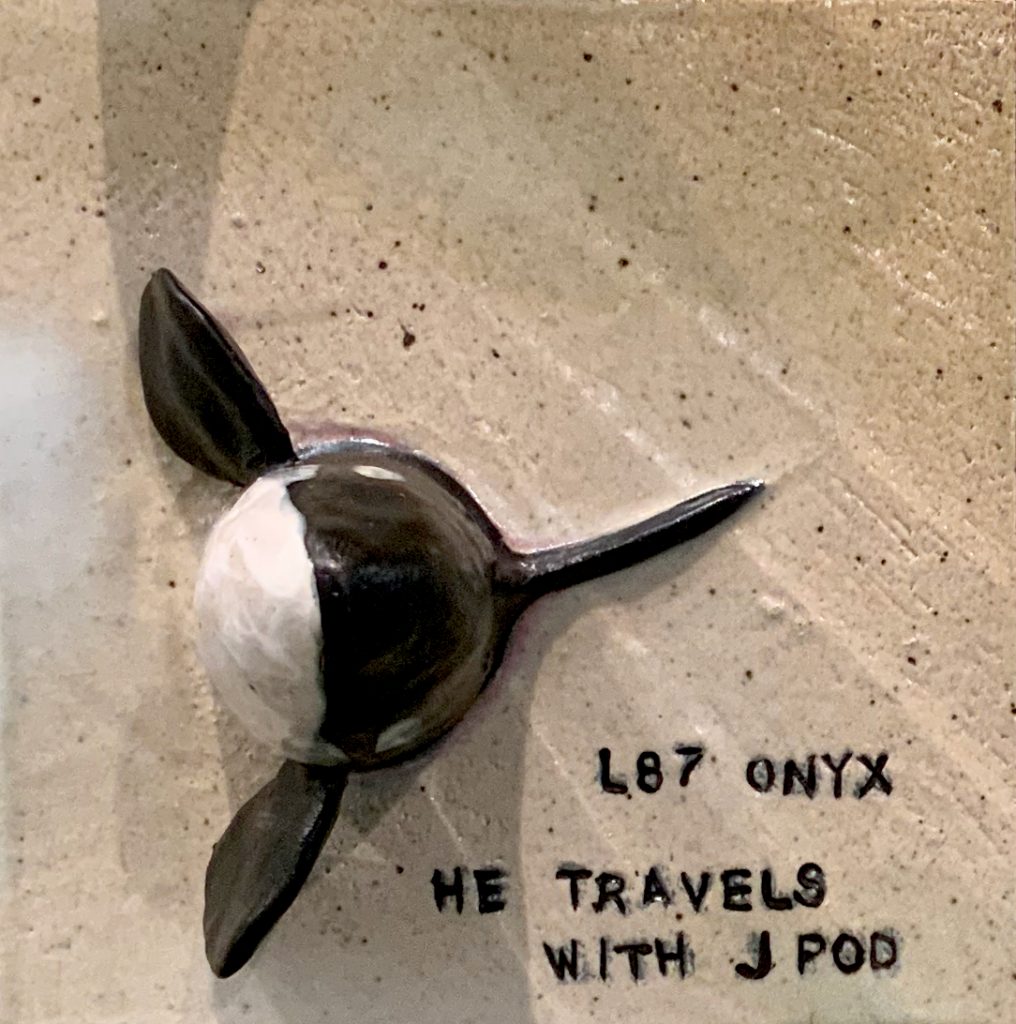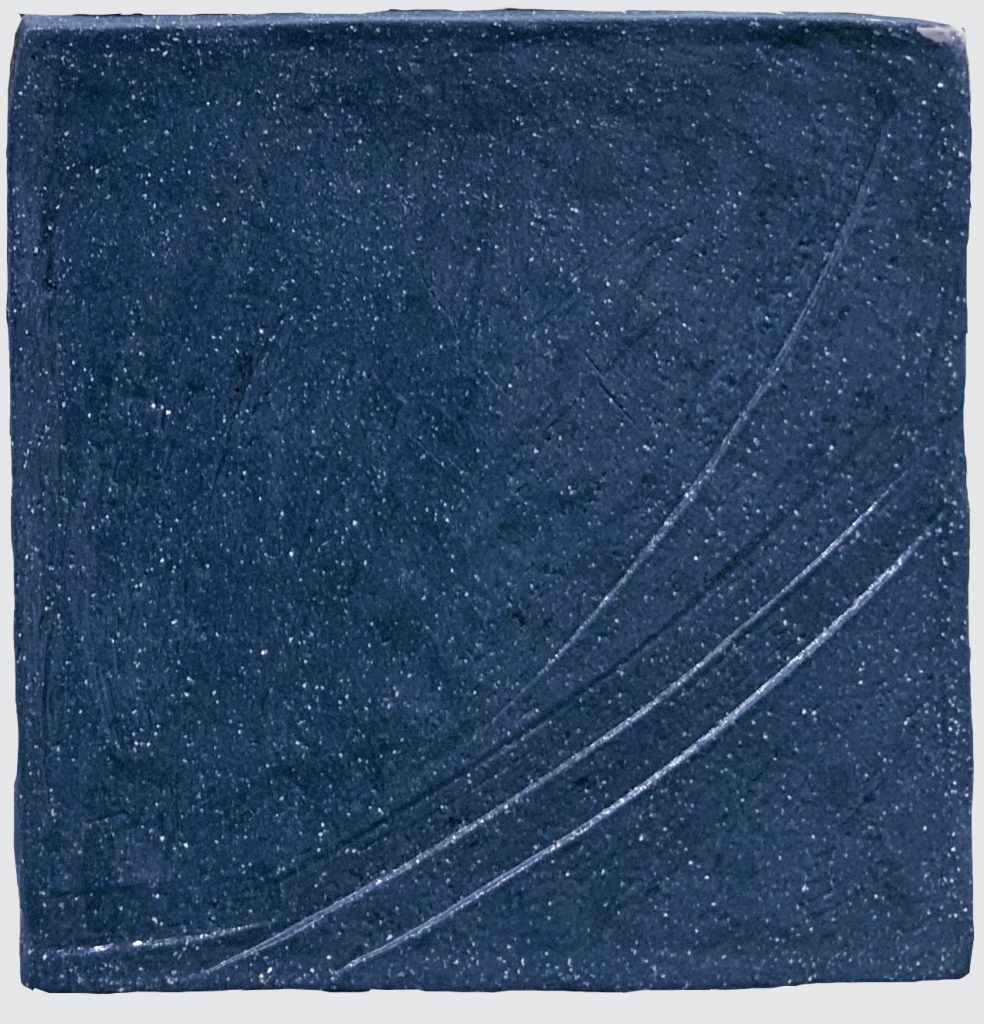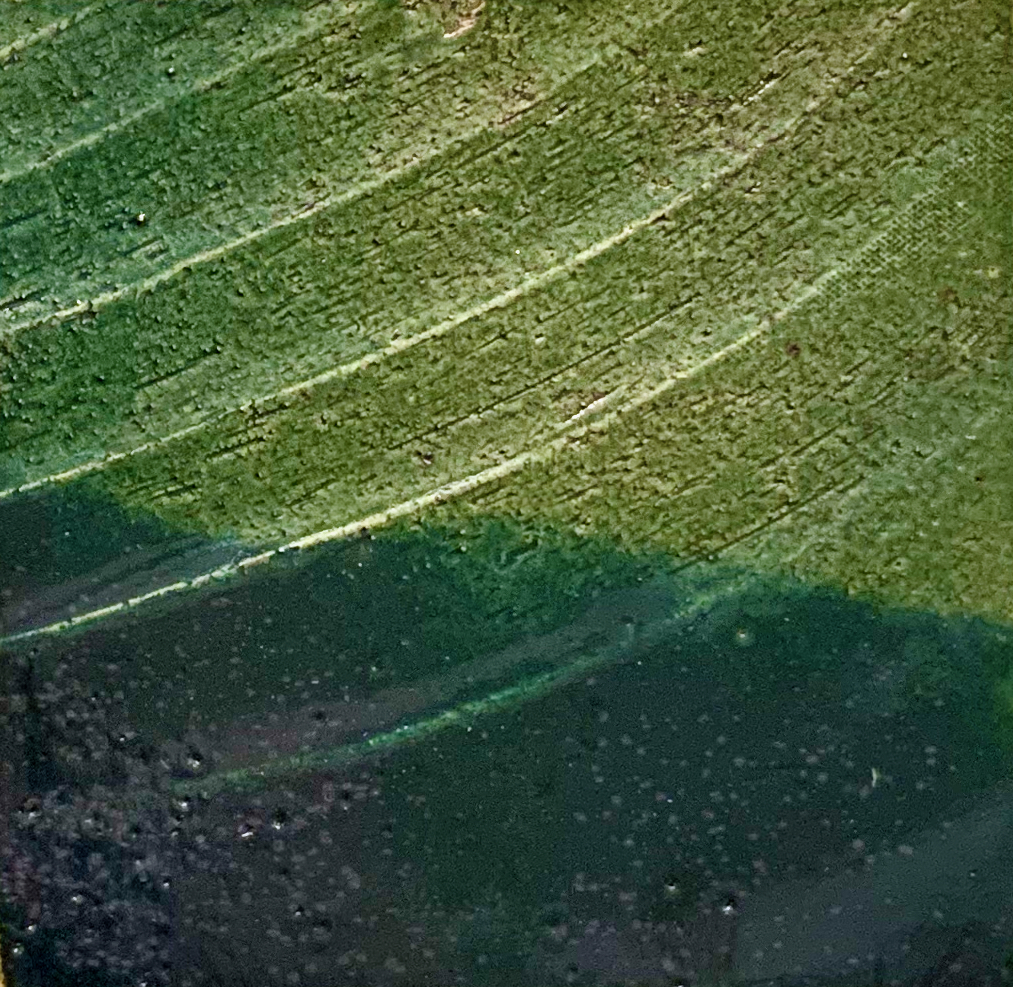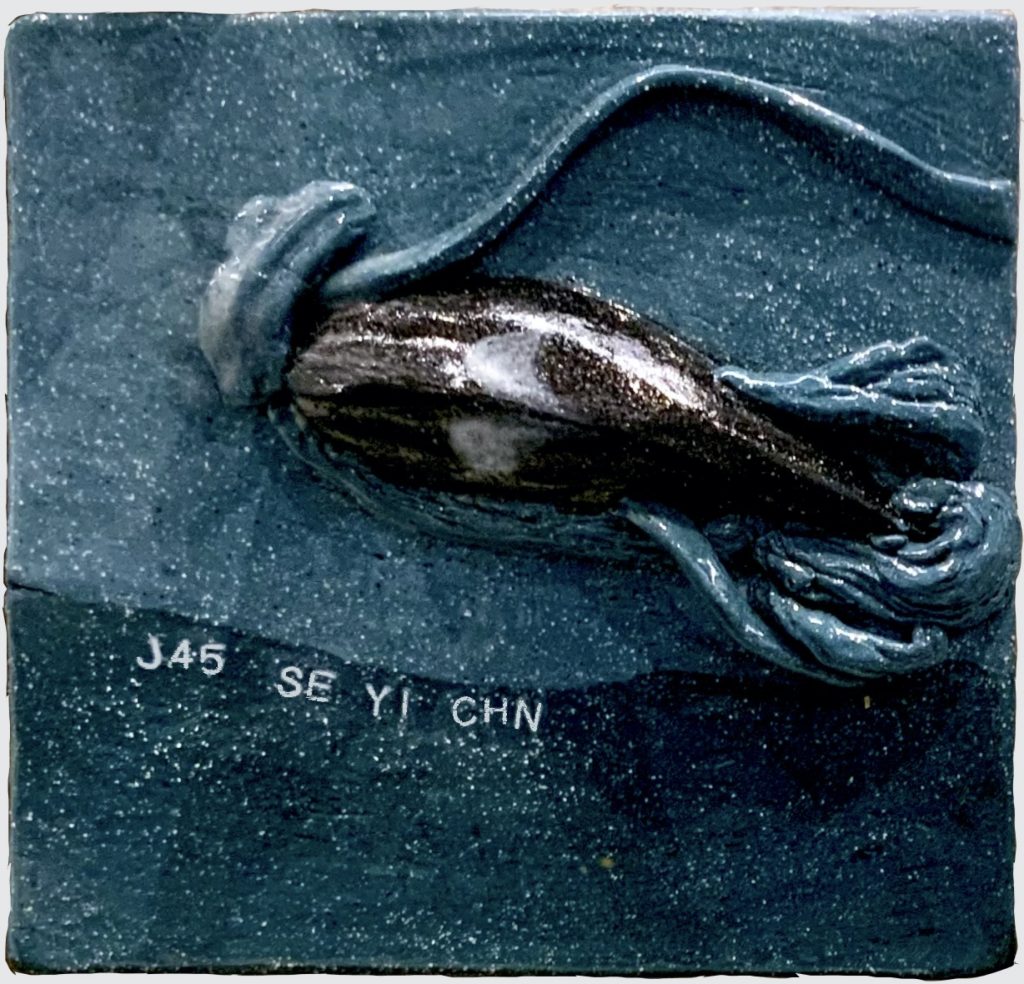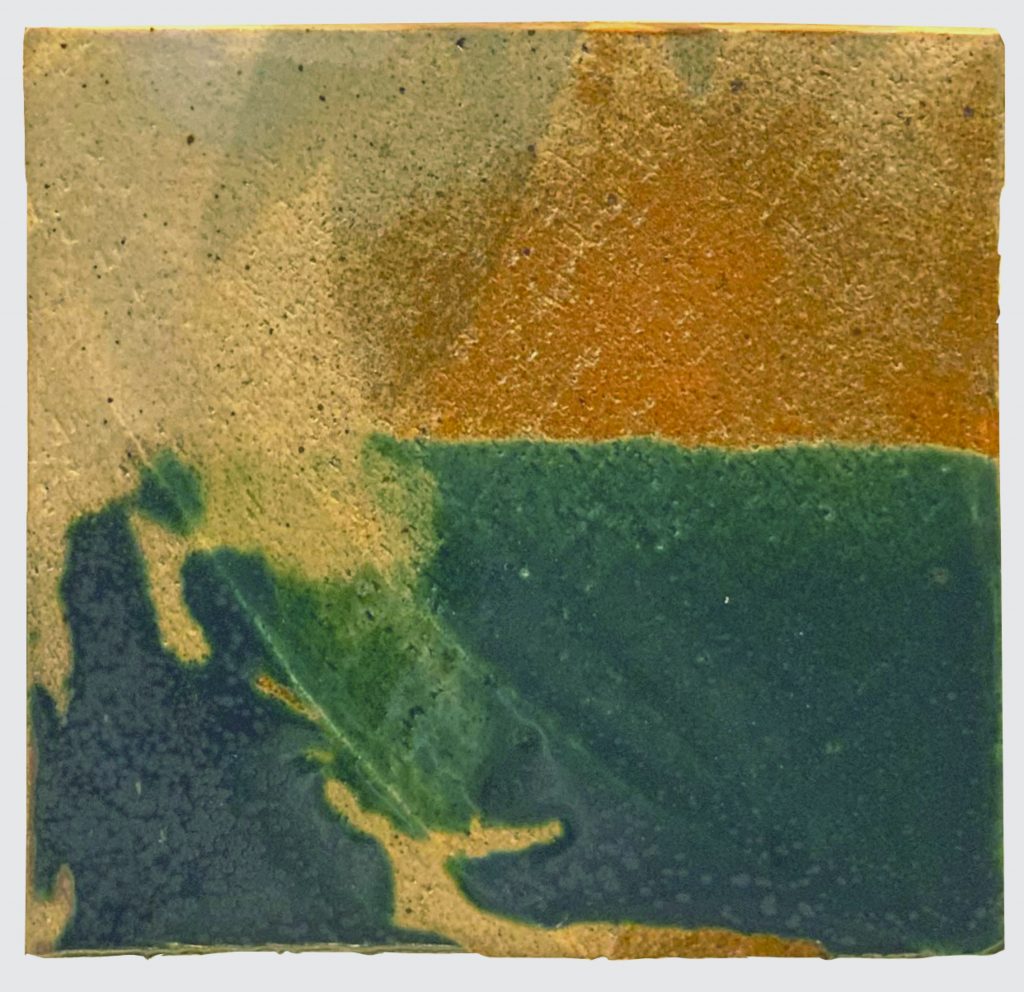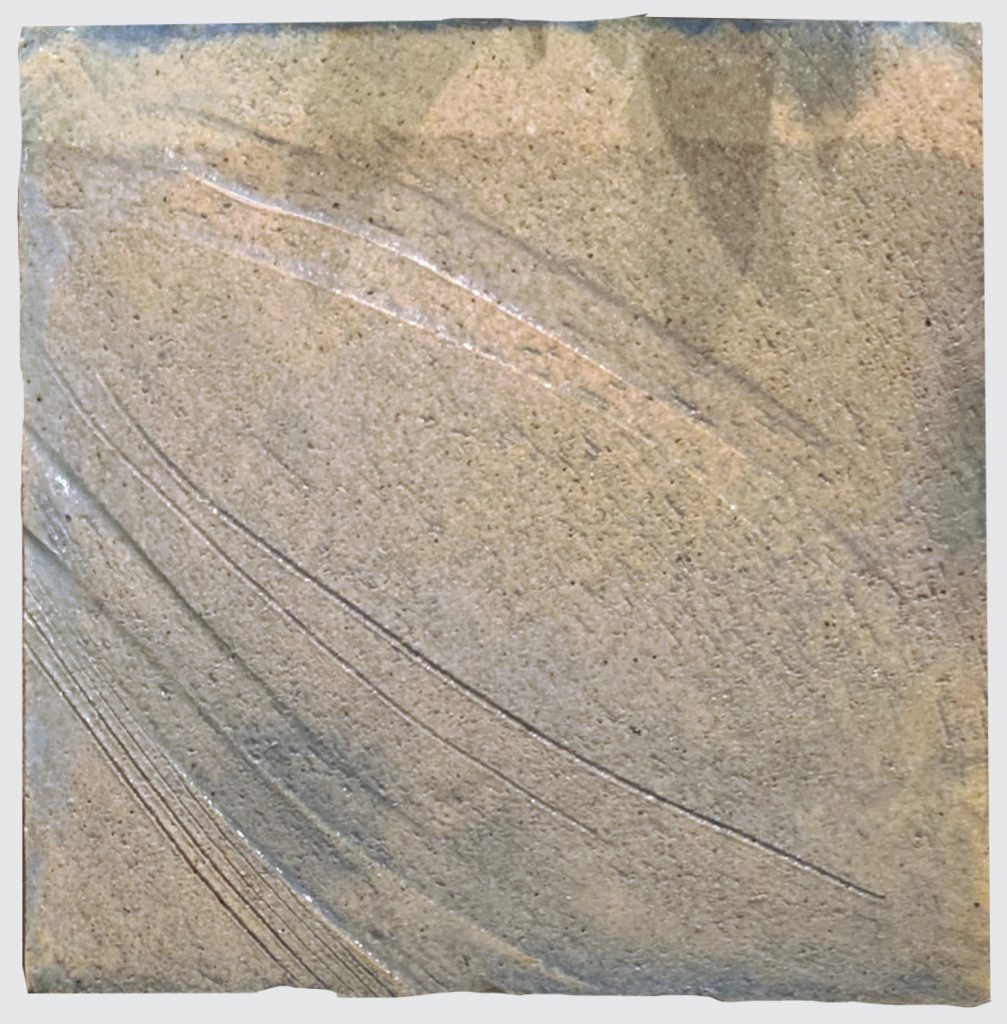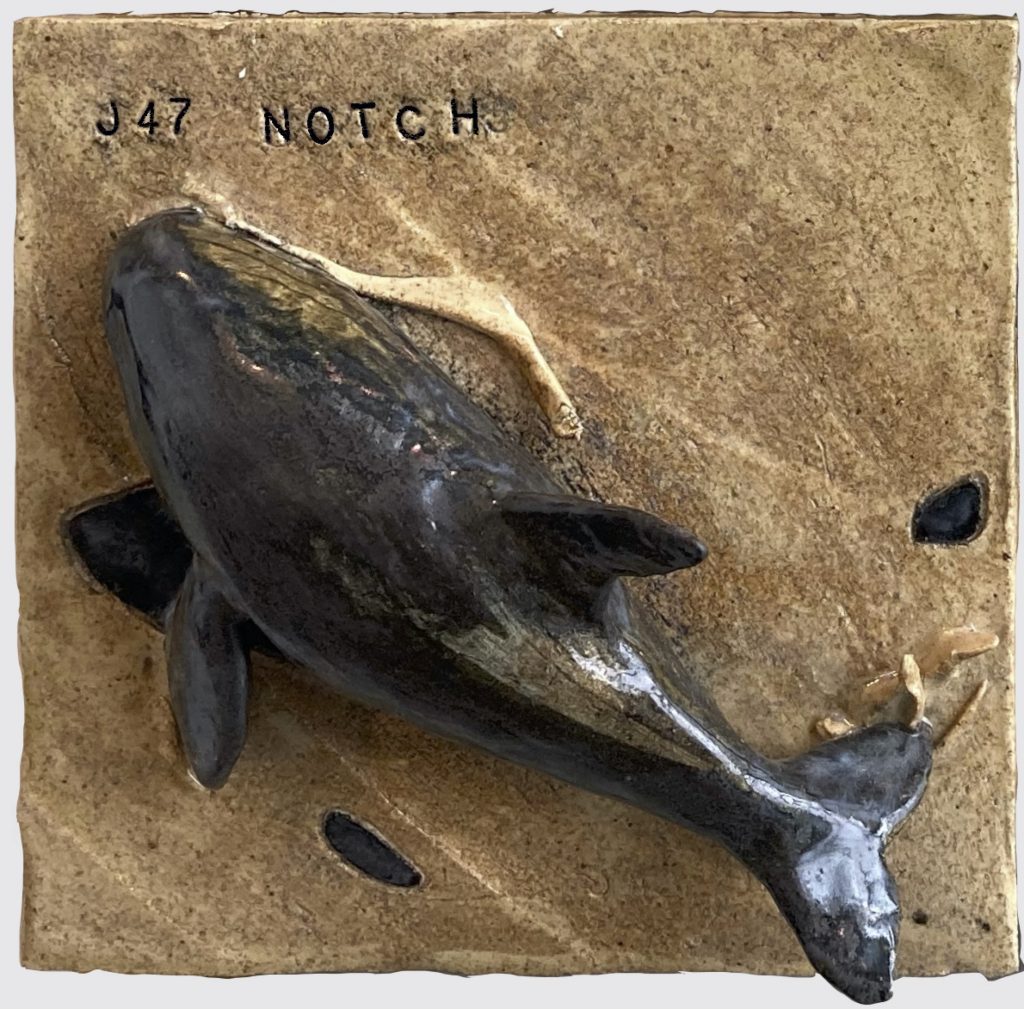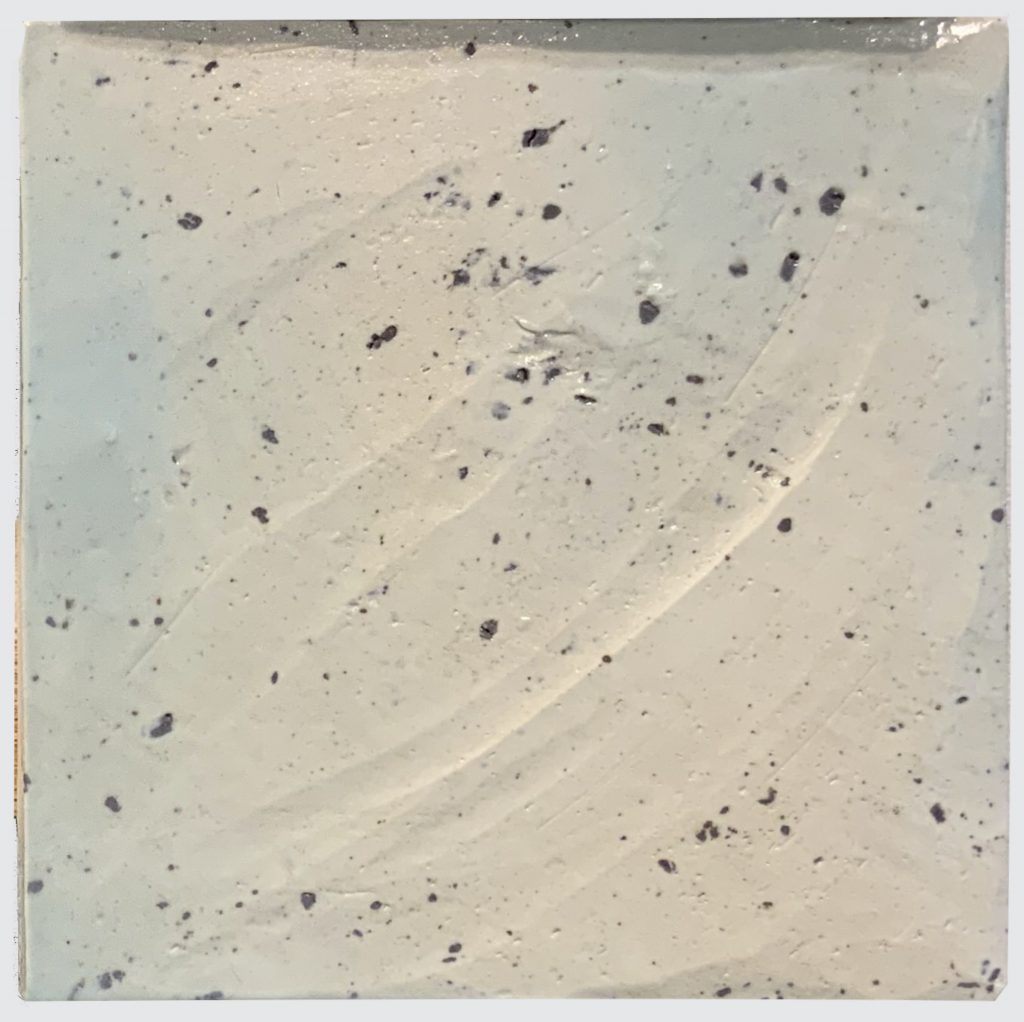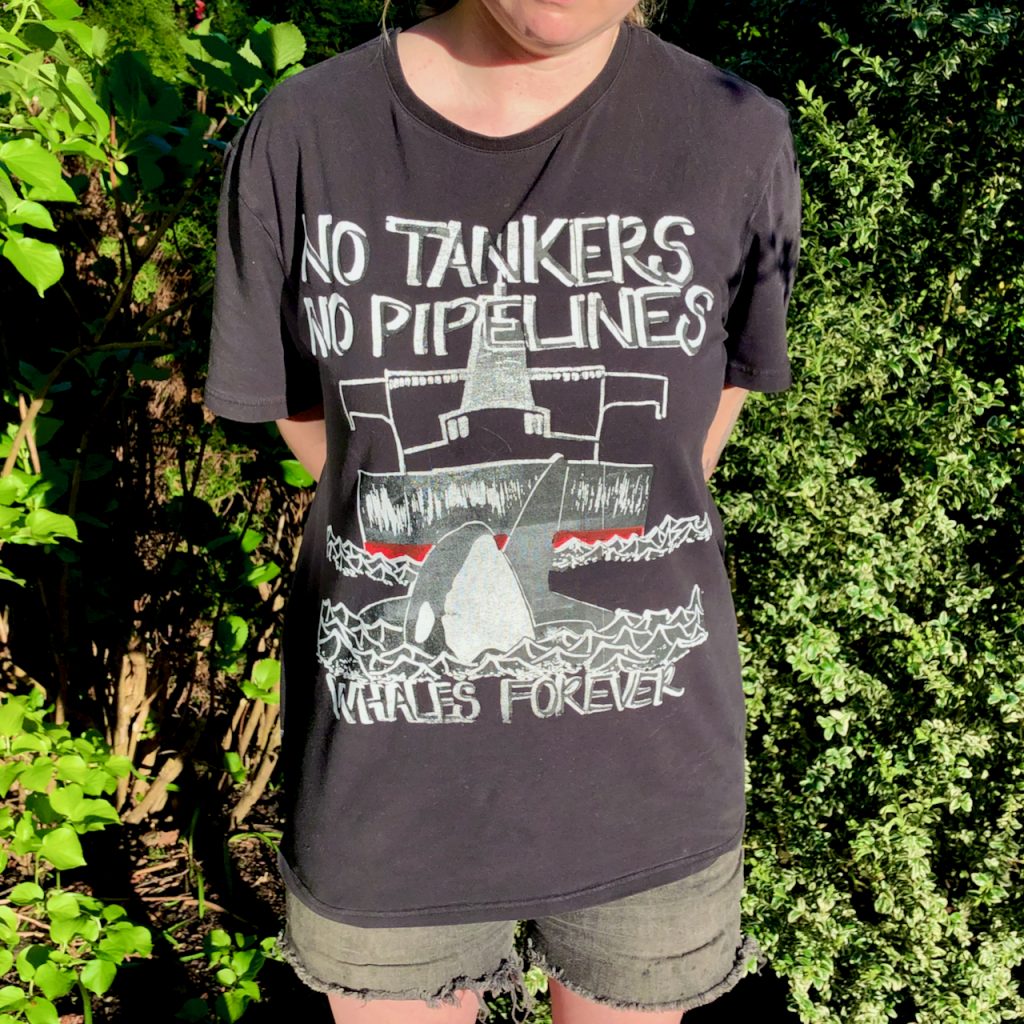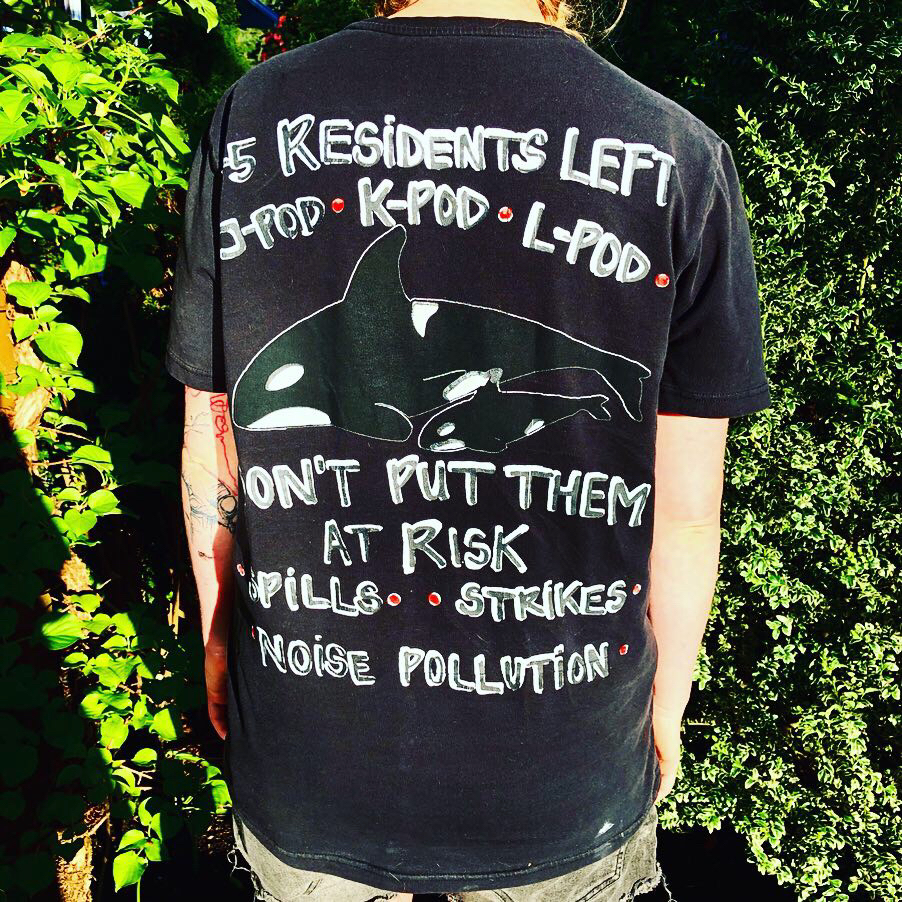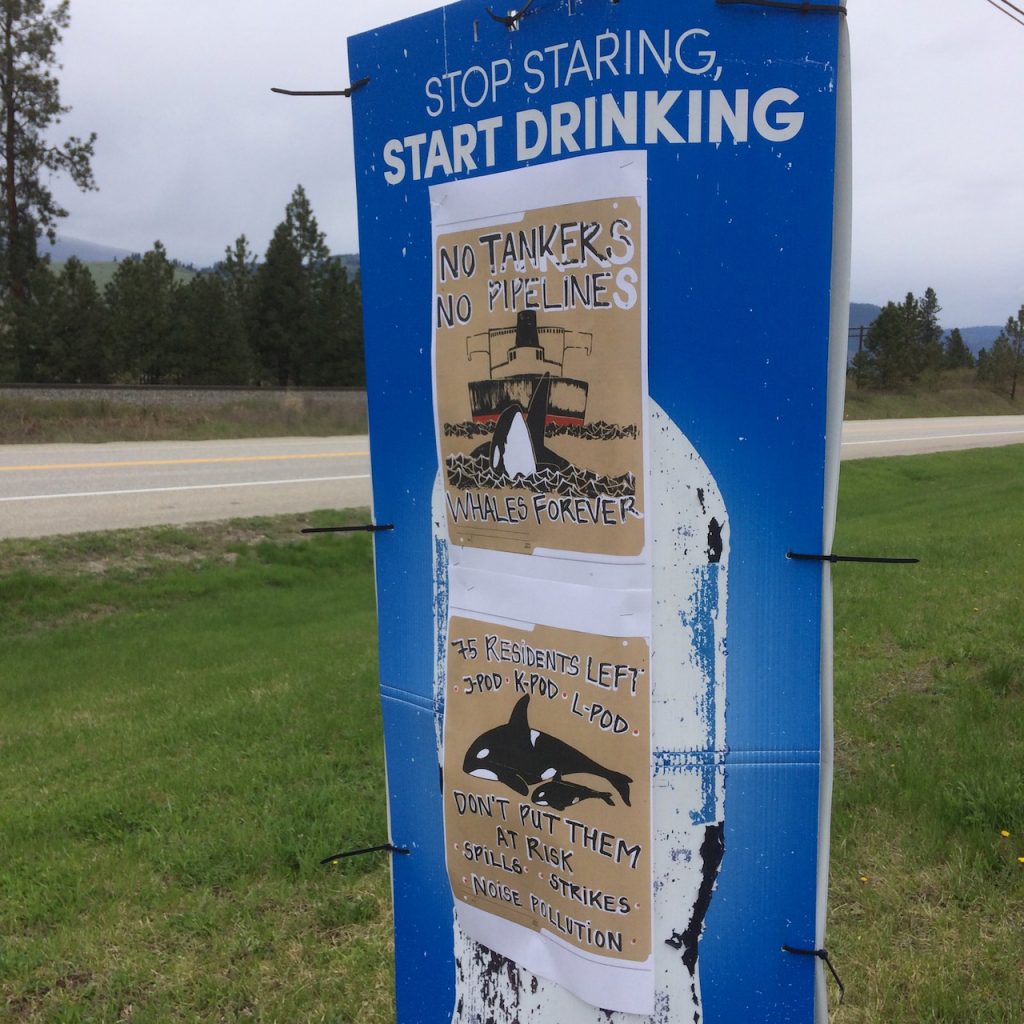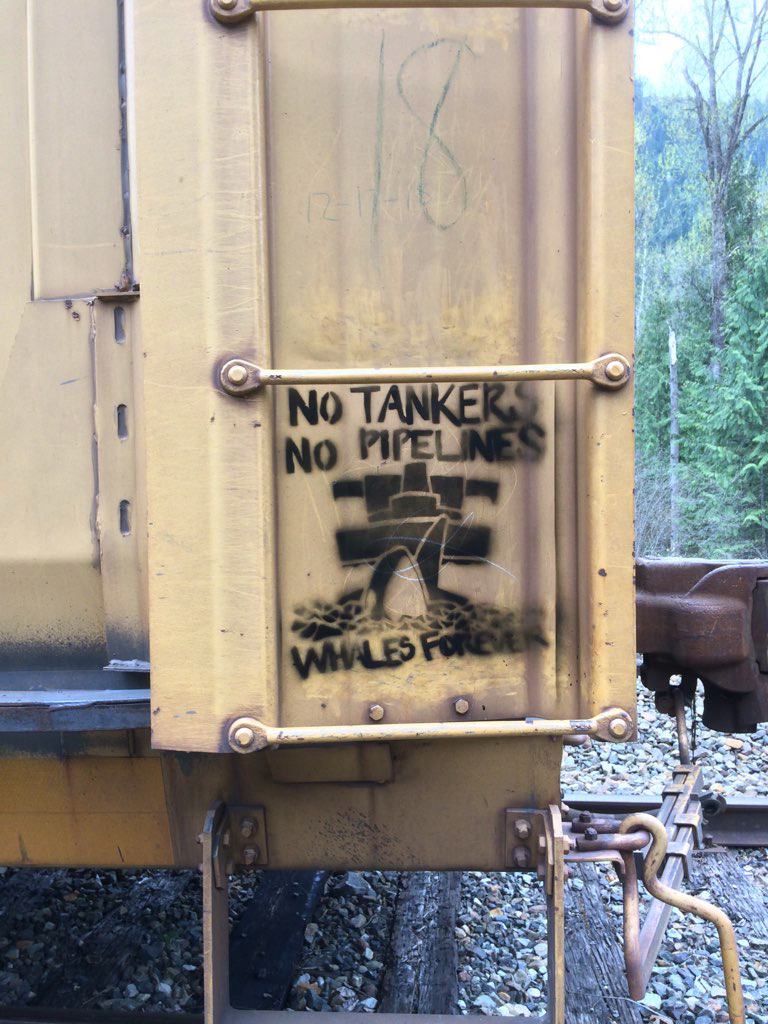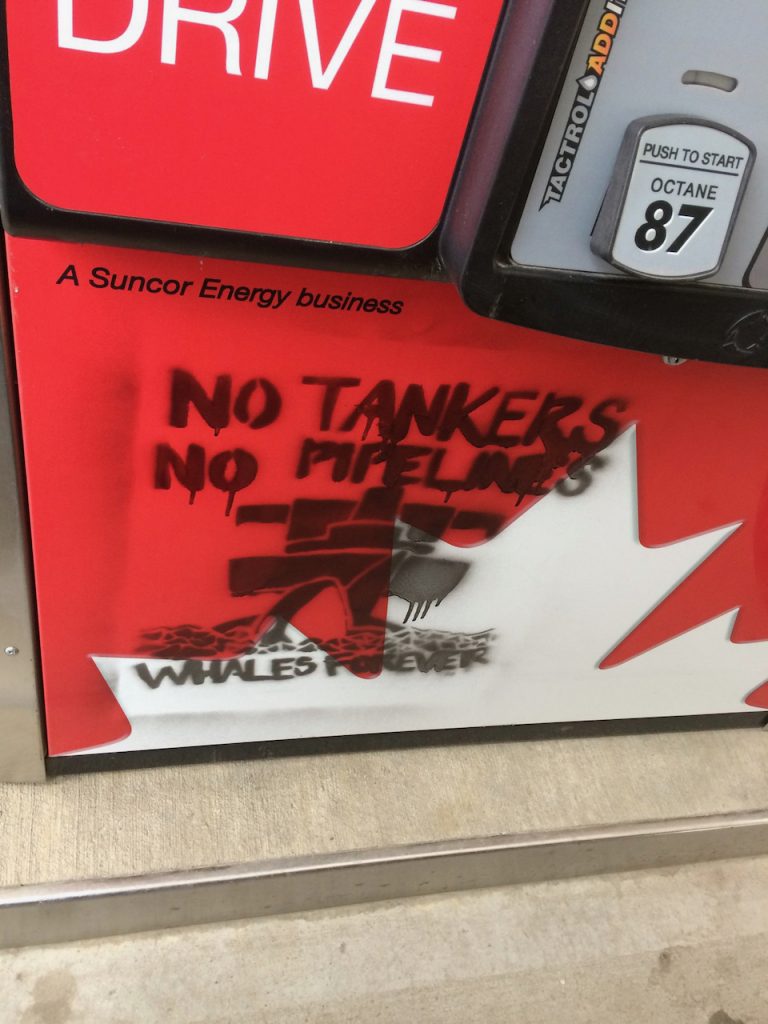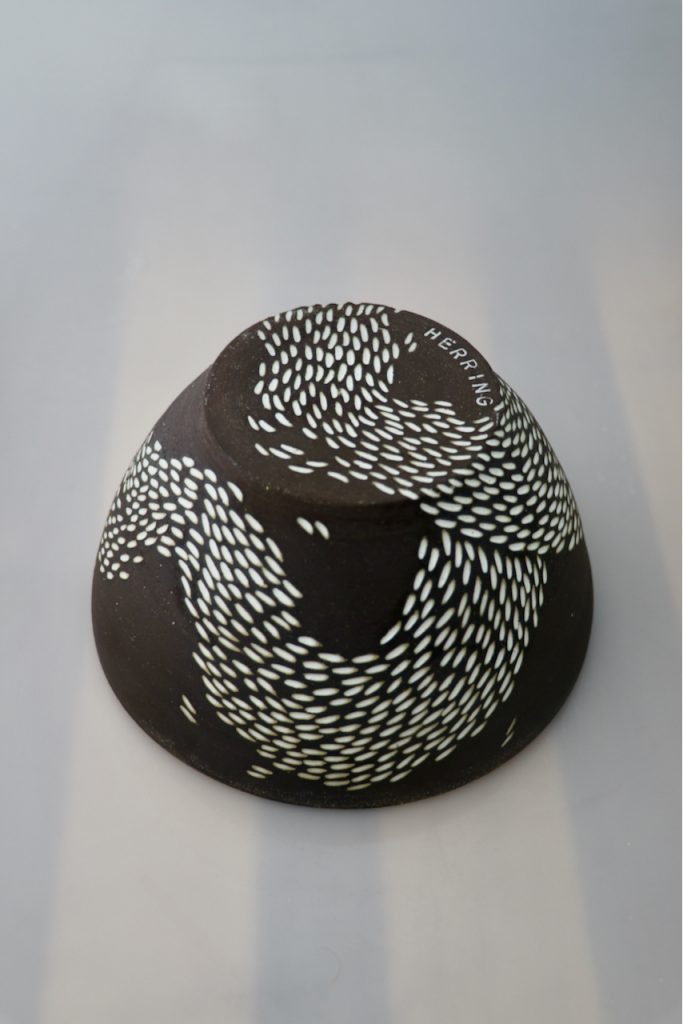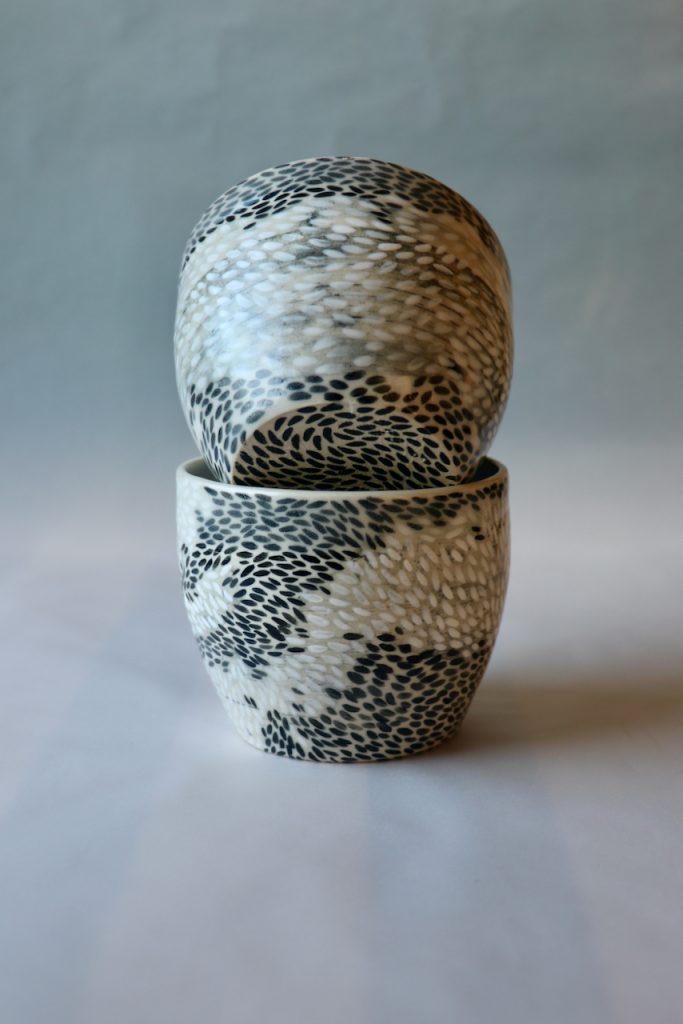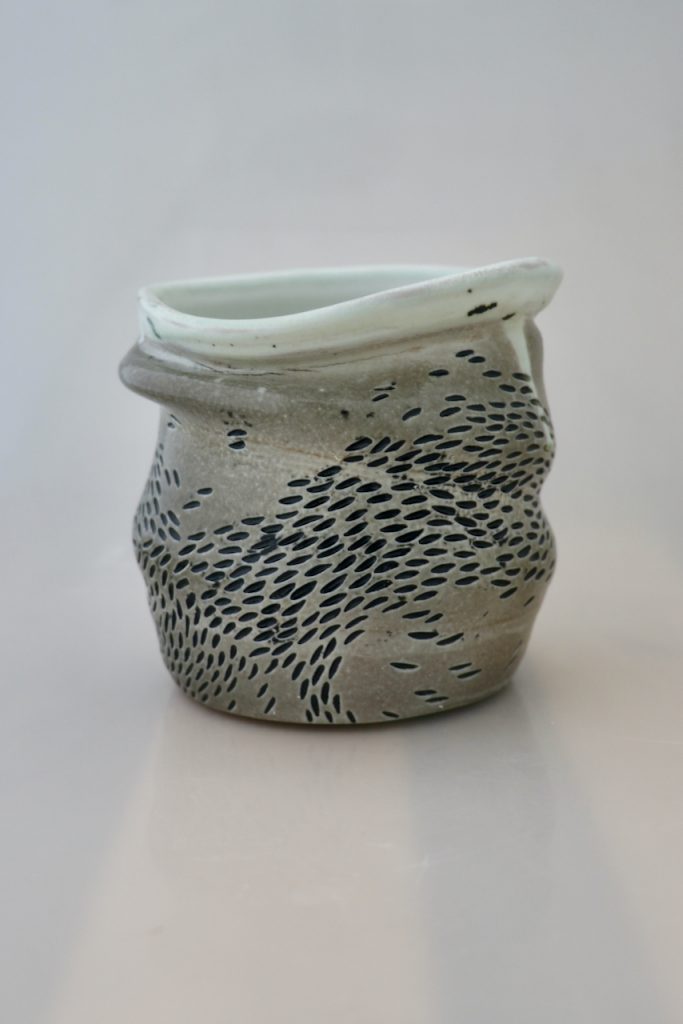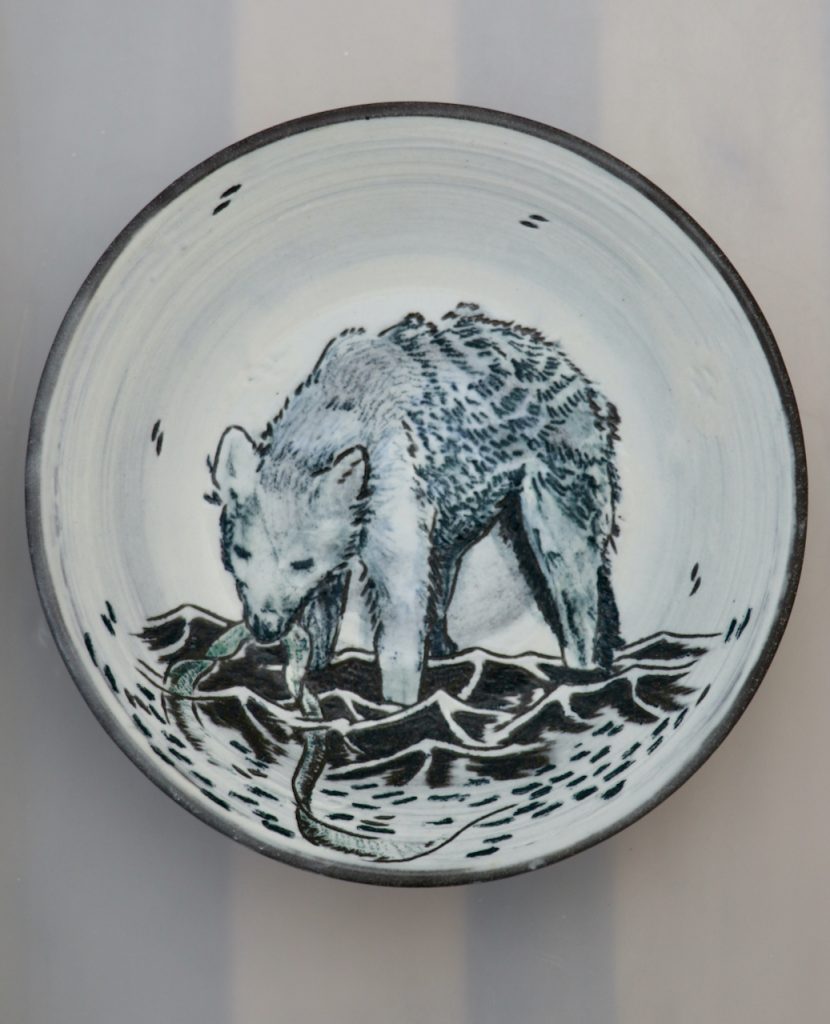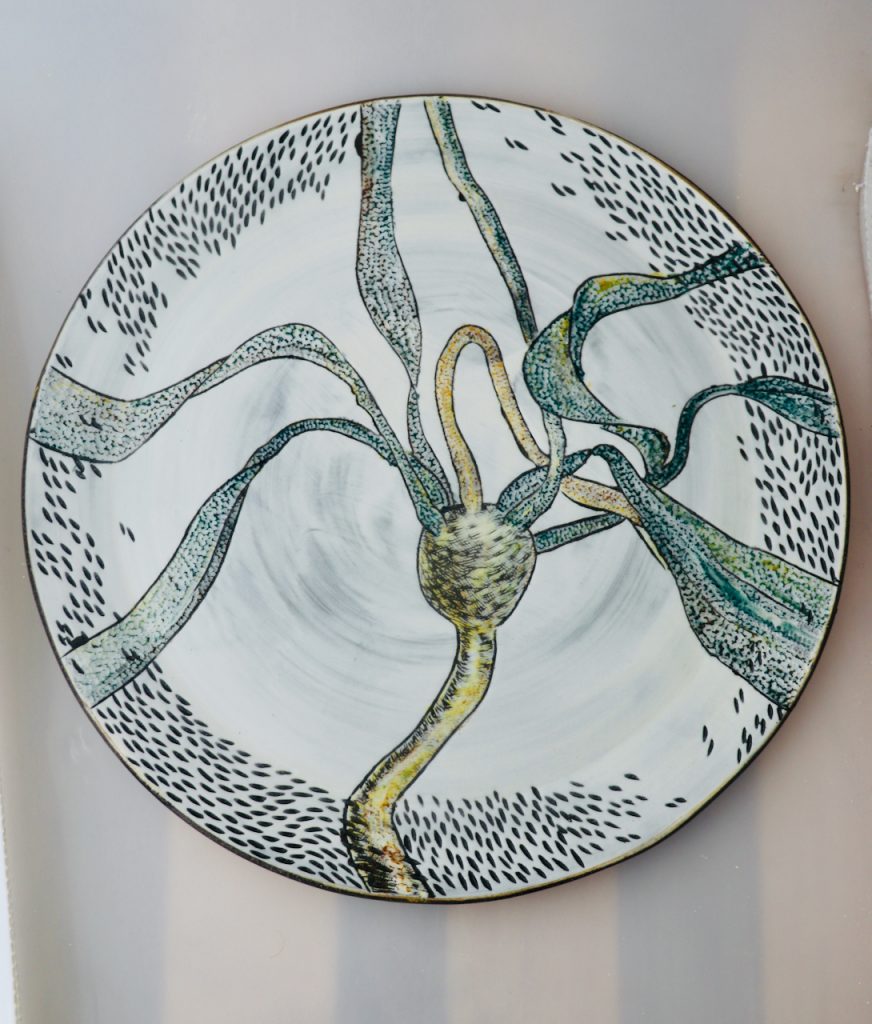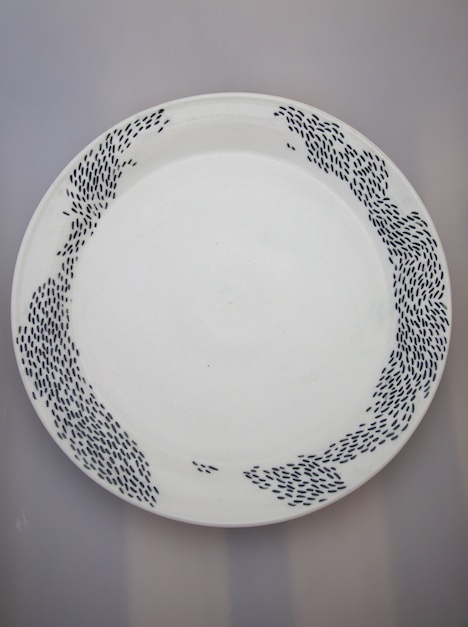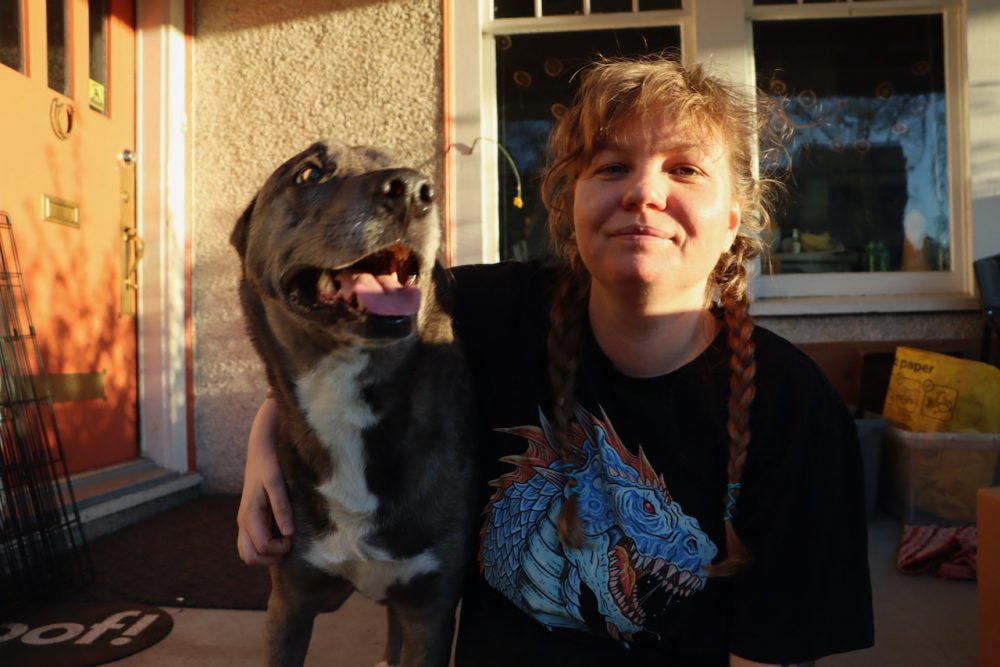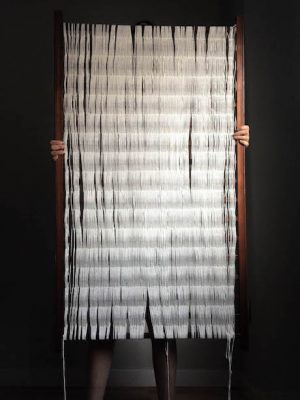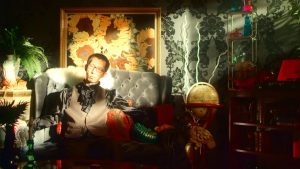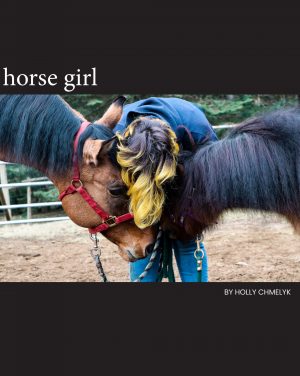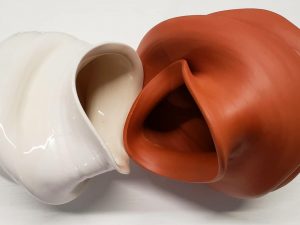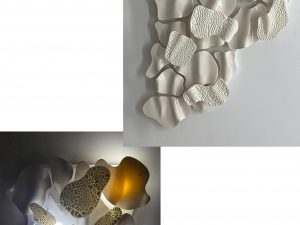The Southern Resident Killer Whales
Clare Wilkening
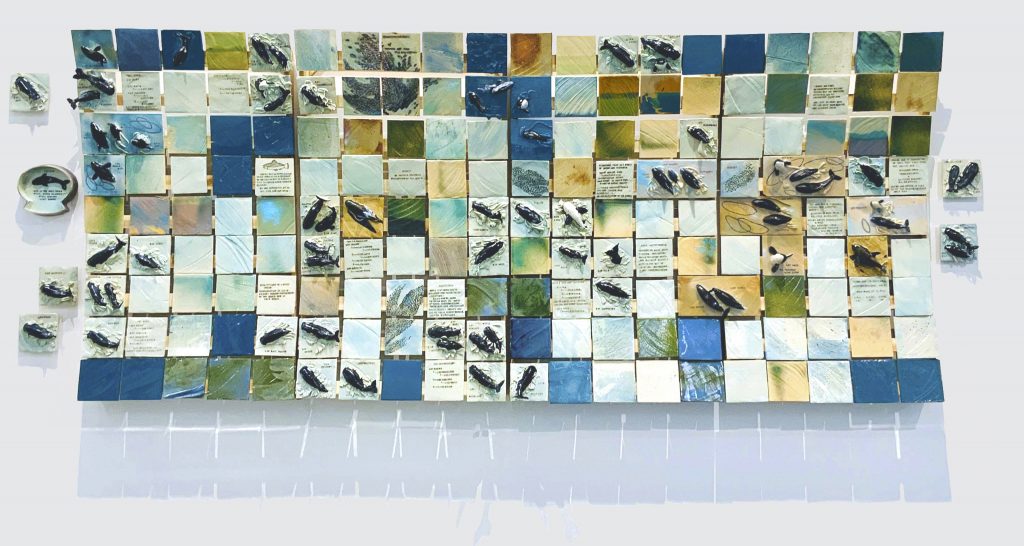
I have been working on a large ceramic project meant to connect myself, my community, and the citizens of Vancouver and beyond with our neighbours: the Southern Resident Killer Whales (SRKW). These orca migrate annually between the open ocean and the Salish Sea, and feed nearly exclusively on Chinook salmon, which are overfished and threatened by disease and climate change. The Southern Residents are on the brink of extinction, and it is very possible that we will lose them over the next few decades.
In this installation there is a ceramic tile representing each actual Southern Resident killer whale. Each whale is individually sculpted and painted with accurate dorsal markings, and has their name, pod, and scientific ID number stamped into the tile. Mothers and their calves appear together on the same tile, as well as sometimes other close relatives. Other tiles are flat and covered with glaze or text bringing context to the ecology of the species. There are currently 186 tiles in the work. The whales are assembled across the surface of the work according to the family groups that they swim with in the real-world. The viewer sees the entire Southern Resident population swimming over the ocean.
Orca live complex, emotional lives with their families, and they have been doing so for countless generations. There are currently only 75 individuals left in this unique subspecies, and the time is now to take actions to care for them, or else face a future without them.
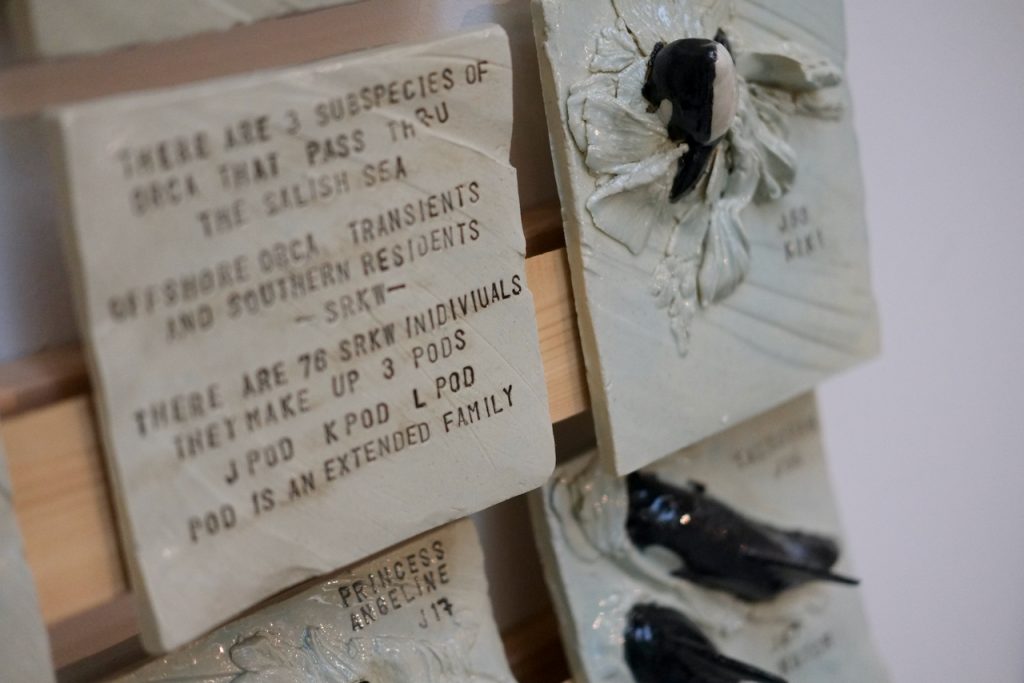
There is also a video component to this project. Sturgeon Bank and Orca (2018), made in collaboration with the David Suzuki Foundation, considers the disappearing Fraser River estuary marsh in the context of its importance to the Southern Residents. The marsh’s eelgrass habitat and brackish water provides shelter for migrating Chinook salmon smolts as they acclimate from the freshwater of the river to the salt water of the ocean. These smolts will grow up to be the primary food source for the Southern Residents. The marsh has been disappearing for decades due to seawalls and flood control. The loss of this habitat is one of the many pressures faced by Fraser River salmon, and by extension, the Southern Resident Orca. The video talks about all that, and about my love for the whales and my process of making the tiles.
For me, thinking about them out there, living their lives in matrilineal, non-material societies, gives me a feeling of peace when life in this city overwhelms me. But of course they bear the brunt of our hyper-consumer lives. I try to convey all this with these tiles. I am continually updating the tiles with the births and deaths in the population, and plan to do so for the rest of my lifetime. Hopefully it will be an exercise in watching their lives grow and thrive, rather than dwindle and flicker out. I started this project on the day that I heard over the radio that BC’s Selkirk Mountain Caribou herd had gone extinct. This project is a gesture of hope and action towards that same day never occurring for the Southern Residents.
The tiles that are affixed to the wall off of the frame represent individuals who have died since I began the project. There is also a tile for the last living captive Southern Resident, Tokitae.
I’ve learned so much from this project about clay and glaze, obsession and dedication, and about the ecology and lives of these whales. They have been a source of peace and joy as well as of sadness, and ultimately they became a framework through which I think about change, species extinction, and futurisms that can hold space for other species to thrive alongside us humans.
This project is expansive beyond my yearly updates with the changes in the population. I also have handprinted silkscreen posters and stencils that I send to my friends across the country to put up in their neighbourhoods and on their travels, to raise awareness and build support for protecting these animals and the Salish Sea their home. I have made t-shirts, gone to festivals and fairs, and talked to hundreds of people about the Southern Residents. People always love to tell me their whale stories, and there is great emotion for them: excitement, amazement, and sadness at the state of the population and ocean, all of which is underpinned by a great amount of love. In some way, these tiles are a vehicle for viewers to process eco-grief, something that we all need to move through, beyond denial and into action.
Ways we can save the Southern Resident Killer Whales:
- Set aside a dedicated and priority quota for Orca food in the annual sustainable catch number for Chinook salmon.
- Stop the Trans Mountain pipeline expansion.
- Stop the Roberts Bank port expansion.
- End open net fish farms.
- Breach the lower 4 Snake River dams in Washington State.
- Support Indigenous land movements everywheres.
- Remove obstructions to salmon passage throughout the Fraser valley.
- Rehabilitate streams throughout the Salish sea and the Fraser watershed, end clearcutting watersheds and mountainsides.
- End over fishing of salmon, make more conservative estimates for allowable catch.
- Silence vessel traffic in the Salish sea.
- More marine protected areas.
- Preserve the Fraser River estuary marsh against rising sea levels by gradually raising the living dikes and eliminating sea walls.
- Wastewater treatment in all municipalities attached to the Salish sea.
- Moratorium on the herring sack roe fishery.
- Remember they are our neighbours and keep them in your heart.
💧
